News
Space travel is heating up again. The tongue-in-cheek way people are choosing to treat this new boom in space pioneering, is by calling it the second space race. Except this time it’s billionaire versus billionaire. Business giants like Virgin’s Richard Branson and Amazon and Blue Origin’s CEO, Jeff Bezos, are looking to the skies, and hoping to define the future of space travel. Another one of the esteemed gentleman at the helm of the new age of space travel is South African born Elon Musk.
Musk famously said: “If one can figure out how to effectively reuse rockets just like airplanes, the cost of access to space will be reduced by as much as a factor of a hundred. A fully reusable vehicle has never been done before. That really is the fundamental breakthrough needed to revolutionize access to space.”
SpaceX recently achieved the breakthrough and have made aerospace engineering history by reusing a previously launched, refurbished rocket. The company sent the rocket into orbit and brought it back down to land, on a drone barge in the ocean. The rocket in question was SpaceX’s Falcon 9. It retained its original engines and components and delivered a satellite for company SES at a fraction of the price.
Reusing rockets will minimize the costs of future rocket launches, and save money on engineering rockets from scratch. SpaceX says the majority of the price of a rocket launch is the building of the rocket itself. Prices will be driven down if the reusability technology becomes commonplace in the aerospace industry.
After a USD$1 billion investment and fifteen years in the making, SpaceX was ready to launch a previously launched rocket into orbit, and bring it back down again. SpaceX’s President, Gwynne Shotwell, says that they are just getting started:
“Looking forward for reusability, we don’t believe it really, really counts unless you can turn it around rapidly, or almost as rapidly, as you turn around an aircraft. Our challenge right now is to refly a rocket within 24 hours. That’s when we’ll really feel like we’ve got reusability right.”
According to Popular Mechanics, the Russian government was initially undecided on reusable rocket technology unsure it would turn a profit for their aerospace giant, Roscosmos. However, after the success SpaceX achieved, they are now reconsidering.
The Chief of Roscosmos Igor Komarov said: “The innovations SpaceX is making are forcing us to work on lowering the cost and raising the product quality. We are running pilot projects in the sphere of retrievable components.”
The Russians risk being left behind in this Space Race 2.0, if they don’t start acquiring the engineering skills necessary to engineer reusable rockets. SpaceX and America’s space authority NASA are linking arms to take another giant leap for mankind and take crafts to Mars by 2020. SpaceX have also said that they would be flying two tourists to the moon in 2018.
The reusing of already engineered components is a philosophy that is seldom tried so remains largely untested. However, electric vehicle (EV) companies, like Musk’s Tesla Motors, are testing their already engineered hardware for reuse. And some headway has been made elsewhere.
Reusable batteries for cars and homes
For quite some time now, car companies working on the implementation of electric vehicles on our roads, purported that once a car-powering lithium-ion battery had served its purpose within an electric vehicle (in accordance with electric vehicle standards), it could be taken out of the car and used as a home-powering energy storage device afterward.
According to experts in the field, the lithium-ion batteries in electrical vehicles still retain 70% to 80% of their energy storage capacity after they reach the end of their legal life cycle inside the vehicles. The idea was that once the battery had been used in the vehicle and was ready for decommissioning, it could be added to a photovoltaic solar array and be used to store the energy produced for the electricity used to power a home during peak demand times.
General Motors realized in 2016 that a 2012 Chevrolet Volt that had driven 300,000 miles had no battery degradation issues – a clear sign that the battery could be reused outside of the vehicle.
“Even after the battery has reached the end of its useful life in a Chevrolet Volt, up to 80 percent of its storage capacity remains,” said Pablo Valencia, GM’s senior manager for Battery Life Cycle Management.
However, a new report by Lux Research, an independent research and advisory firm in the United States, claims that recycling the lithium-ion batteries, instead of reusing them, is the best way forward for the automotive industry. An excerpt from the report read:

“Reuse of batteries from electric vehicles will deliver questionable returns on account of reduced performance, limiting them to application with less frequent and shallower depth of discharge cycles.”
Christopher Robinson, Lux Research Associate and the author of the report named ‘Reuse or Recycle: The Billion-Dollar Battery Question’, said:
“With present technology, recycling old batteries for new materials is the more economical option for creating the most value from existing materials. That said, innovations in areas like packaging and testing could tip the balance in the future, so companies should have plans for both recycling and reuse.”
BMM and Nissan both recently announced that their respective electric vehicles would be able to reuse the batteries as home energy storage systems in the near future. However, Lux Research cautions that the companies need more efficient testing, sorting, and repackaging than that which has already been advertised. Robinson says that second-life systems or the EV battery to wall systems, offer only limited cost savings and not much else.
However, BMW’s Manager of Connected eMobility Cliff Fietzek asserted that people could power their homes for 24 hours with the decommissioned batteries from their i3 EV car models. He said:
“It doesn’t make sense to scrap the battery at the end of the useful life of the car because it’s still good for services like powering your home. The car battery may be over designed for a home storage system, but well suited.”
Works Cited
Grossman, David. "After SpaceX's Success, Russia Wants a Reusable Rocket Too." Popular Mechanics. 04 Apr. 2017. Web. 06 Apr. 2017.
"Recycling, Not Reuse, Is the Better Choice for Batteries from Retired Electric Vehicles." Recycling, Not Reuse, Is the Better Choice for Batteries from Retired Electric Vehicles | Lux Research. 22 Nov. 2016. Web. 06 Apr. 2017.
Shanklin, Emily. "Reusability." SpaceX. SpaceX, 23 Mar. 2013. Web. 06 Apr. 2017.
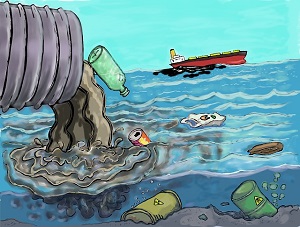 A grim reality the world has had to face in the modern age is the fact that the planet’s waterways are overwhelmingly polluted. Much of it is unfortunately thanks to the technologies and products engineered in the past.
A grim reality the world has had to face in the modern age is the fact that the planet’s waterways are overwhelmingly polluted. Much of it is unfortunately thanks to the technologies and products engineered in the past.
Humans need to put their waste somewhere; most of the time it is the ocean that gets the tough task of handling it all.
The National Ocean Service at the U.S. Department of Commerce reports that most ocean pollution begins on land. In fact, 80% of pollution that is prevalent in the marine environment comes from land, the group says. The biggest contributors are from nonpoint sources. The group writes:
“Nonpoint source pollution includes many small sources, like septic tanks, cars, trucks, and boats, plus larger sources, such as farms, ranches, and forest areas. Millions of motor vehicle engines drop small amounts of oil each day onto roads and parking lots. Much of this, too, makes its way to the sea.”
One of the places that effluence gathers and creates visible pollution ‘soups’ is The Great Pacific Garbage Patch. The Patch is a supposed Texas-sized, floating island of marine pollutants. It is also known as the Pacific Trash Vortex. Plastics and other pollutants apparently swirl around the ocean from the West Coast of North America all the way to Japan, according to National Geographic.
The Ocean Clean-up Project
Expertise has been garnered to eradicate pollution in the ocean, initiatives that have been realised in response to concerted pleadings from environmentalist communities. The technological solutions envisioned are challenges faced by those with a bent for engineering design and involve a range of organizations.
Conventional methods of ocean clean-up have involved trawling through the oceans with nets to catch plastics and other floating pollutants. One organization developing pollution-ending technologies, Ocean Cleanup, believes this method is slow, inefficient, and in some cases harmful.
In June of 2016, Ocean Cleanup - a non-profit foundation - unveiled a prototype of their large-scale plastic catcher.

The Ocean Cleanup Project’s Prototype - Credit: YouTube.com
Boyan Slat is a 21-year-old Dutch inventor and entrepreneur and also the founder and CEO of the Ocean Cleanup project. He is behind the novel ocean-cleaning design; a design which was named one of Time Magazine’s top 25 inventions of 2015.
“Why move through the ocean, if the ocean can move through you? So, I came up with this passive system, which would allow the natural ocean currents to do the hard work for us,” Slat told an audience in a prototype unveiling.
The prototype funnels plastics and garbage into an area where it all collects in a V-shape formation barrier. The prototype prevents plastics from traversing physical barriers and targets floating plastic - on and near the surface. The organization installed the prototype in June of 2016. They are ready to peruse their findings and present arguments for the further utilization of the technology. The feasibility of the project will be calculated this year, and if successful the world will see the first placement of the plastic catcher by the end of 2017.
A spokesman for the Project commented, “Computer models showed that with a single one of those systems, deployed for ten years, we should be able to clean up about half of the Great Pacific Garbage Patch. Or more, if we were to deploy more systems.”
Prototype unveiling
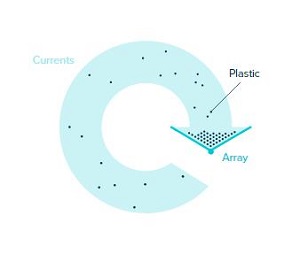
Has it lived up to the hype?
Two oceanographers, Kim Martini and Miriam Goldstein, have had their reservations about the feasibility of the technology. In an email to the Guardian, Martini wrote that Ocean Cleanup was not well read on “oceanography, ecology, engineering and marine debris distribution.”
The oceanographers are not sure the designs Ocean Cleanup have presented will be useful in capturing the volume of plastic. They felt strongly enough to offer their own review of how unfeasible the project is.
Other experts point out that it is better to trap plastic at source, instead of waiting for it to disperse across a large area of ocean. It has been estimated that it can take 50 years for plastic that has just been introduced into the ocean, to reach the Great Pacific Garbage Patch.
The Guardian reports that 19 billion pounds of plastic will make it into our oceans this year alone. Further engineering innovation is needed to nip the problem in the bud.
Lapping up the oil
Cleaning up the mess resulting from engineering endeavours has also become a bone of contention, especially with offshore oil drilling operations. Oil spills are a nasty by-product of the oil industry and of great harm to the oceans’ ecosystems.
A group of science and engineering researchers at Argonne National Laboratory at the University of Chicago have presented a possible solution to minimizing the effects oil spills have on the ocean and its marine wildlife. They suggest that they could soak it up before it becomes a problem.
The researchers presented the Oleo Sponge to the internet this March; an invention which soaks up oil and petroleum products and removes them from the water.
The laboratory showed in a demonstration that the Oleo Sponge worked efficiently at minimizing prevalent oil within water, and fared better than “industry-standard” technologies. The sponge is also reusable. The researchers say they are still testing the product, but are looking for licensing partners to allow them to sell the sponge to private companies.

A prototype of a sponge that can be used to extract oil from water. Credit: The University of Chicago
“We already have a library of molecules that can grab oil, but the problem is how to get them
into a useful structure and bind them there permanently,” said Seth Darling, a student of the University of Chicago’s Institute for Molecular Engineering. He is one of the scientists contributing to the new sponge.
As Mary Shelley, author of Frankenstein, said, “Invention, it must be humbly admitted, does not consist in creating out of void, but out of chaos.” She may have lived before the world faced such unprecedented levels of pollution, but her words, aided by her fertile imagination, ring true.
Works Cited
"Argonne News Brief: Oleo Sponge Soaks up Oil Spills from Water." YouTube. 06 Mar. 2017. Web. 27 Mar. 2017.
"Boyan Slat Unveils The Ocean Cleanup Prototype." YouTube. 30 June 2016. Web. 27 Mar. 2017.
Kratochwill, Lindsey. "Too Good to Be True? The Ocean Cleanup Project Faces Feasibility Questions." The Guardian. Guardian News and Media, 26 Mar. 2016. Web. 27 Mar. 2017.
https://www.brainyquote.com/quotes/keywords/invention.html
The breakthroughs in the biomedical engineering industry are staggering. For instance, the world has moved closer to a system of wearable diagnostic tools that are designed to continually monitor human health – consider the Fitbit for instance. And ideas that had previously been designated to the realm of science fiction are becoming reality.
One such advanced study involves ingestible robots, used for retrieving swallowed button batteries and also for the treatment of the wounds they cause. In the US alone 3,500 batteries are reportedly swallowed annually. These robots are controlled by magnets on the outside of the body, but some robots may eventually be powered by stomach acid.
With biomedical engineering technologies becoming more apt at generating data about the human body and with more accuracy, the world is edging closer to more precise medical diagnoses.
Robert F. Graboyes, a senior researcher at the Mercatus Center at George Mason University, has said that wearable telemetry will redefine the future of doctors’ appointments. In his article, ‘Wearable Telemetry - Eating Health Care’, he writes:
“Wearable telemetry (Jawbone and Fitbit are familiar examples) is helping to overturn 2,500 years of medical tradition. For the first time, wearables offer convenient, passive, continuous monitoring of vast numbers of human bodies. Implications for the doctor-patient relationship are profound.”
Patients will be equipped with data that doctors might have to peruse and consider, before diagnosing a patient.
However, the affordability of wearables in a time when there is still a stark gap between rich and poor highlights the need for affordable novel applications for medical diagnosis in the biomedical engineering industry.
Smartphone apps

Credit: HearScreen.com
Audiologists in South Africa are making it as wallet-savvy as possible, by installing an app on your smartphone.
“Hearing loss is considered an invisible epidemic because people don’t see it or know that someone suffers from it,” said De Wet Swanepoel, a professor of audiology at the University of Pretoria, South Africa, in an interview with the BBC.
The project that Prof Swanepoel worked on has led to the development of an app called HearScreen. All you need is your smartphone and a pair of headphones. The app uses a series of beeps that tests the hearing of the person through the headphones. Based on what they can and cannot hear, the app determines the extent of medical assistance required.
The app is not only ensuring that poorer rural communities get the diagnoses they need, but it also addresses the shortage of audiologists in South Africa.
“Mobile apps can serve a very useful role in raising awareness about hearing and making hearing care more accessible. But if a mobile app for hearing assessment is not accurate this can give incorrect information to the user, which can be harmful,” Dr Shelly Chadha, technical officer for deafness and hearing at the World Health Organization, speaking to BBC News.
A report compiled by Research2Guidance revealed that there are 259,000 health apps available on the app stores available to smartphone users.
But wait...there’s more
In a surgery first, a robot stitched up a pig’s small intestine. Relying on its own tools and artificial vision and intelligence it carried out the procedure without assistance. Furthermore, the procedure performed by this Smart Tissue Autonomous Robot (STAR) was deemed to have been completed more ably than by human surgeons who were given the same task.
One would predict that real, mortal surgeons might consider this robot dexterity and prowess threatening. On the contrary; one of the researchers on the STAR project, a paediatric surgeon, was not in the least concerned, saying, “Even though we surgeons take pride in our craft at doing procedures, to have a machine that works with us to improve outcomes and safety would be a tremendous benefit.”
And the sky is the limit: robots that allow doctors to login from around the world through internet connections, and perform surgeries from hundreds of miles away, are no longer merely futuristic notions.
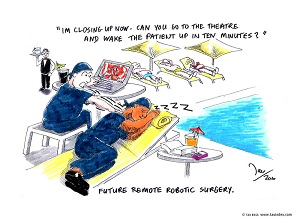
It is indeed an exciting time for would-be students interested in both engineering and medicine. Biomedical engineering offers a number of options, from software design to the design, building and maintenance of machinery and gadgets for medical facilities.
Dean of Engineering at the Engineering Institute of Technology (EIT), Dr Steve Mackay, presented at the annual Biomedical Engineering Conference in Canberra, in Australia last week. As an educator he spoke of the challenges faced by EIT’s course designers endeavouring to expose students to just the right mix of content in this dynamic and broad field of engineering. He also spoke of his delight in the technologies available today which enable the instructors to reach students all around the world on a live, interactive platform.
The Engineering Institute of Technology offers an Advanced Diploma in Biomedical Engineering. The course brings together applied science and engineering, interspersed with electrical and electronic engineering. Advanced Diploma of Biomedical Engineering.
Works Cited
Jackson, Tom. "The 'invisible Epidemic' Afflicting Millions Globally." BBC News. BBC, 14 Mar. 2017. Web. 22 Mar. 2017.
"Wearable Telemetry - Eating Health Care – InsideSources." InsideSources. 21 Mar. 2017. Web. 22 Mar. 2017.
HearScreen. "Main." Hearscreen. Web. 22 Mar. 2017.
Hardesty, Larry. “Ingestible Origami Robots.” 12 May 2016
Strickland, Eliza. “Autonomous Robot Surgeon Bests Humans in World First.” 4 May 2016
http://remotesurgery.wiki-site.com/index.php/Main_Page
It was the world’s worst nuclear disaster.

(The Chernobyl Disaster 2015).
The catastrophic Chernobyl disaster occurred on 26 April, 1986. Chernobyl, the nuclear power plant in Ukraine, is responsible for thousands of deaths, including large numbers of people suffering from premature cancers linked to exposure to the deadly radiation (The Chernobyl Disaster 2015).
The accident occurred during an experiment to test a way of cooling the core of the reactor in an emergency situation (The Chernobyl Gallery n.d). The reactor design was flawed and was operated with inadequately trained personnel. A chain reaction began after the reactor vessel broke during a power surge. The resulting fire carried the radioactive material into the atmosphere and spread across a vast area. The extent of the radiation can be seen below.

Radiation across Europe (Otro Mundo Es Posible 2015).
What went wrong?
Firstly, there was a deficit when it came to process control; partly explained by the fact that the plant was built for military purposes. It was designed to operate a constant loading in a plutonium production mode. Secondly, in the Soviet Union at the time the dominant philosophy invested faith in the worker - the operators in this instance (who unfortunately lacked adequate training). Automation was viewed with suspicion as it impacted on jobs (Chernobyl Did Not Need to Occur 2009).

The control room of reactor 3, not 4. (The Chernobyl Gallery n.d)
The experimental procedure was intended to run as follows:
- The reactor was to be running at a low power level, between 700 MW and 800 MW.
- The steam-turbine generator was to be run up to full speed.
- When these conditions were achieved, the steam supply for the turbine generator was to be closed off.
- Turbine generator performance was to be recorded to determine whether it could provide the bridging power for coolant pumps until the emergency diesel generators were sequenced to start and provide power to the cooling pumps automatically.
- After the emergency generators reached normal operating speed and voltage, the turbine generator would be allowed to freewheel down.
(The Chernobyl Gallery n.d.)
Prior to the accident the operators violated the plant’s technical specifications. The operators ran the plant at very low power, but without following the safety procedures (Nuclear Energy Institute 2015).
The reactors were unstable at low power, primarily owing to control rod design and ‘positive void coefficient’ factors. Without sufficient cooling for the reactors when the water levels dropped the nuclear chain reaction and power output accelerated.
Consequently, these factors all lead to an uncontrollable power surge, which destroyed Chernobyl reactor 4. This created an immediate increase in heat, which shattered a few of the pressure tubes containing fuel. The hot fuel reacted with water and caused a steam explosion lifting the 1,000-metric-ton cover off the reactor. The pressure tubes ruptured causing a second explosion which exposed the reactor’s core to the environment (Nuclear Energy Institute 2015).
The fire burned for 10 days. Deadly radioactive material escaped into the environment.
Could this disaster have been prevented?
In short, yes.
If the process controls had been properly designed, the Chernobyl disaster could have been averted. Additionally, with more able and appropriately trained operators the outcome may have been less catastrophic (Chernobyl Did Not Need to Occur 2009).
The International Atomic Energy Agency created a group known as the International Nuclear Safety Advisory Group. In its report in 1986 it supported the theory of operator error, “the catastrophic accident was caused by gross violations of operating rules and regulations” (INSAG safety report).
Overall, this detrimental accident proved that a process must be understood before it can be controlled. The most experienced control engineers would all tell you this (Chernobyl Did Not Need to Occur 2009).
Are you interested in learning more?
The Engineering Institute of Technology (EIT) have an array of engineering programs. The School of Industrial Automation, Instrumentation and Process Control is dedicated to this area of expertise, which would have been invaluable in this Chernobyl disaster. If this area is of interest, have a look at the programs offered: http://www.eit.edu.au/engineering-institute-technology-eit-school-industrial-automation-instrumentation-and-process-contro
Additionally, EIT’s Master of Engineering (Safety, Risk and Reliability) is an ideal gateway to boost your capacity to tackle these real world increasingly complex issues, specifically in; safety, risk and reliability. This carefully designed learning journey will develop factual understanding and also exercise participant’s creativity and design-thinking capabilities. Employers are hungry for these skills, and program graduates can expect a significant advantage when interacting with employers, clients, consultants and fellow engineering peers.
Gallery from the Chernobyl Disaster:

A sea of gas masks is left behind in an abandoned building (It Looks like our Planet after Humanity Disappears 2016).

An innocent child who was affected by this horrific engineering failure (Chernobyl Disaster 2013).

An abandoned park (World Remembers 30th Anniversary of Chernobyl Disaster 2016).

Looking into the reactor (The Chernobyl Gallery n.d.).
Inside Chernobyl: Rare Footage of the disaster zone. Have a watch of this YouTube video
We would love to hear from you. Please send us your comments and/or personal experiences relating to this infamous disaster.
References:
Arbor, A. 2016. World Remembers 30th Anniversary of Chernobyl Disaster. [ONLINE]. Available at: https://bhavanajagat.com/2016/04/26/world-remembers-30th-anniversary-of-chernobyl-disaster/
Alvarez, B. 2015. Otro Mundo Es Posible. Avaialble. [ONLINE] Available at: http://www.otromundoesposible.net/contaminacion-radiactiva-incidentes-en-la-industria-nuclear/. [Accessed 4 March 2017].
Bogdan. 2015. The Chernobyl Disaster. [ONLINE] Available at: http://historyconflicts.com/chernobyl-disaster/. [Accessed 1 March 2017].
Chernobyl Disaster 2013, ‘The affects to children after the Chernobyl disaster’, Twitter post, 16 October. Available at: https://twitter.com/chernobyl_facts
Grossman, P. 2014, Inside Chernobyl: Rare footage from ruins left by world's greatest nuclear disaster, YouTube video, 5 December. Available from: https://www.youtube.com/watch?v=VvH7BRubFIg
Liptak, B. 2009. Chernobyl Did Not Need to Occur. [ONLINE]. Available at: http://www.controlglobal.com/articles/2009/chernobyl0907/. [Accessed 20 March 2017].
Moore, C. 2016. It Looks like our Planet after Humanity Disappears. [ONLINE]. Available at: www.dailymail.co.uk/news/article-3556058/
Paul. n.d. The Chernobyl Gallery. [ONLINE]. Available at: http://chernobylgallery.com/chernobyl-disaster/cause/
Safety Series No. 75-INSAG-4, IAEA, Vienna, 1991. Available from: http://nuclearsafety.info/safety-culture/
2015. Nuclear Energy Institute. [ONLINE]. Available at: https://www.nei.org/Master-Document-Folder/Backgrounders/Fact-Sheets/Chernobyl-Accident-And-Its-Consequences
China’s National Energy Administration (NEA) has announced that all construction projects for new coal power plants will be cancelled, effective immediately. Instead, the NEA is investing $361 billion into expanding renewable energy technologies in an effort to reduce the crippling smog levels in many cities in China. The number of coal power stations that will be halted, according to Reuters, is “over 100”.
The Independent predicts that the move from coal to renewable power will reportedly generate 13 million jobs in the renewable energy sector in China.

Credit: Pixabay.com
The job losses in the coal industry will be extensive, but the plan is to retrain these workers for the oncoming renewables revolution. The reality, however, may not be quite as clear cut or as rosy as hoped.
Australia
Australian experts seemingly have a different story to tell when it comes to renewable energy employment. The Australian Bureau of Statistics (ABS) reported that there had been a 16% drop in employment in June of 2016.
According to ABS’ research, the employment in renewable energy activities was estimated as follows:
|
Year |
No. of employees |
|
2011/12 |
19,220 |
|
2014/15 |
13,300 |
|
2015/16 |
11,150 |
Olivia Kembler, the Head of Policy at the Climate Institute said, “A 16% decline since last year, following after several years of falling job numbers, is a direct result of the government’s failure to set a national strategy for clean, modern energy. That costs us in terms of higher prices, less reliable and more polluting power, but we should also recognize it costs us in terms of the thousands of new jobs that we could have but don’t.”
However, the Minister of Environment and Energy, Josh Frydenberg, said that the figures were not wholly correct. He said that the Australian Renewable Energy Agency was about to announce developments that would lead to 2300 new jobs in the renewable industry - just as the ‘record low’ numbers were reported.
The job situation in the renewable energy sector needs to be monitored – projections of huge growth in employment have not panned out. In Australia small-scale solar installations are on the rise, not the large-scale ones. And yet it is the latter that require labour, alongside their inevitable maintenance issues.
American optimism
Researchers at Greentech Media Research, a media company that publishes daily reports on the renewable energy sector, are optimistic about the future employment prospects for the global electricity market.
They report that they have seen an annual growth of 50% across the global solar market. They have also reported on “major mergers and acquisitions in energy storage companies, and utilities spending billions of dollars in renewable energy technologies”.
The Environmental Defense Fund (EDF) reported that from 2012 to 2015, renewable energy employment figures rose by 6%. Their bolder claim is outlined in the report: ‘Now Hiring: The Growth of America’s Clean Energy & Sustainability Jobs’:
“Solar and wind jobs have grown at rates of about 20% annually in recent years and are each creating jobs at a rate 12 times faster than that of the rest of the U.S. economy”.
The Solar Foundation performed a census of Americans working in the solar energy industry and found that there had been more than 260,000 working professionals actively working in the industry. The figure was three times it was in 2010.
The important question to ask is, ‘Will jobs in the renewable energy sector be retained?’ Some argue that the key to ensuring demand for jobs in this sector continue to rise is up to the government of the day, but automation technologies may yet replace some of those which are presently using manpower.
Automation
“Substation automation, decades ago, removed the need for workers at substations to carry out hour to hour adjustments in the control settings of the grid,” A GTM Researcher told social media site Reddit during a Q&A session.
Automation has been, and will be, a force that replaces the more rudimentary jobs in the energy generation industry.
He went on to say: “Distribution automation is increasingly reducing the number of truck rolls (and with it man-hours) required to manually isolate faults in the grid. Furthermore, new customer service technologies are reducing the need for call center employees - a primary driver of costs within utility retail operations.”
Another researcher at GSM offered a comment about automation as well:
“I’d add that while automation has an effect on the solar market, most jobs scale with demand. Automation is at play in the factory, where modules, inverters, and other solar equipment are manufactured. However, selling those components and installing systems requires real people talking to customers, designing projects, and getting out in the field to build them.”
Finding a job in the green collar sector - as it is being called - has also been a question amongst engineering professionals who want to get involved with what seems like the next big thing. Experts from GTM Research say the key to finding employment in the industry is a combination of networking and ‘developing passion projects’ and showcasing your interests and abilities to future employers.
Works Cited
"Home | Environmental Defense Fund." Home | Environmental Defense Fund. Web. 20 Mar. 2017.
"We Are GTM Research, a Market Analysis Firm Focused on the Transformation of the Global Electricity Industry. AMA • R/Futurology." Reddit. Web. 20 Mar. 2017. The Australian.
http://www.theaustralian.com.au/business/technology/renewable-energy-sector-employment-falls-abs-figures-say/news-story/0d06f72f928e427f0cd983cc1910e6ee"China Halts over 100 Coal-fired Power Projects: Caixin." Reuters. Thomson Reuters, 16 Jan. 2017. Web. 18 Jan. 2017.
“The future wars will be fought over water.”
Are we heading for a future where those who have the cleanest and most abundant water will be the most prosperous? As it stands, to discern which countries are first world and which are third the cleanliness of drinking water is a consideration.
To conserve clean water some have been thinking outside the box. California’s county of Los Angeles has been through a long drought so is ready to go ‘balls to the wall’ to try and save their water.
In 2015, 96 million apple-sized, black polyethylene (plastic) balls were floating in the Los Angeles Reservoir.
American news outlets ran with the story with the following headlines, from the New York Times: In California, Millions of ‘Shade Balls’ Combat A Nagging Drought. And the Washington Post reported: Plastic ‘shade balls’: The hypnotizing tool California is using to save water.
Except, the balls were never intended to be the answer to California’s drought problems. California was utilizing the balls before the drought had ever started ravaging the land. The media had failed to do its research.
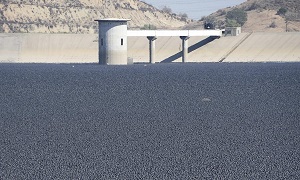
Credit: XavierC
All about chemicals
The L.A. Department of Water and Power had been introducing the plastic balls into their reservoirs since 2008. The first few were dumped into the Ivanhoe water reservoir in Silver Lake, Los Angeles.
The county had begun to notice that the UV rays of the sun were turning naturally occurring bromide into bromate. Bromate is a concern for municipal reservoirs around the world - it is a cancer-causing chemical. Silver Lake’s reservoir is especially at risk because, being uncovered, it is directly exposed to sunlight.
The balls were commissioned by the Los Angeles Department of Water and Power to counteract the sun’s UV rays and keep the water safe. Incredibly they delivered a dual benefit: they did indeed keep the water safe from bromate, but they also conserved water by reducing evaporation.
They slowed the evaporation of water and prevented the degradation of its quality, but at a cost - the shade balls cost the state USD$34.5 million, with each ball costing 36 cents. Reducing evaporation would’ve only saved Los Angeles USD$2 million per year. (But the cost savings to individuals who may have contracted Bromate inducing cancers should also be factored in.)

LADWP General Manager Marcie Edwards told NPR:
“This is a blend of how engineering really meets common sense. We saved a lot of money ; we did all the right things.”
Many reservoirs do not need to take these kinds of measures due to being covered; the ones that remain open require preventive measures so that chemical contamination does not occur.
The company that designed and manufactured them is XavierC. They specialize in the manufacturing of the “ballasted plastic conservation balls” and were well aware of their ability to slow evaporation. The company says it is a “cost effective, low maintenance solution for Cities and Municipalities”. The company says the balls should last for 25 years.
The solution is unfortunately not so neat. Richard Harasick, the director of the L.A. Department of Water and Power said that the department knew the shade balls would not be a permanent solution for reservoirs that supply drinking water to Los Angeles. Drinking water reservoirs have to be covered - shade balls allegedly do not comply with the standards needed.
The shade balls are being removed from the reservoirs in L.A. and costly coverings are being built. The shade balls do, however, remain in L.A.’s Reservoir #2 as the reservoir does not hold any drinking water.
The market for creating a technology that conserves water and presents a solution for drought- stricken areas remains.
Works Cited
Maddaus, Gene. "Shade Balls Are a Really Stupid Way to Conserve Water." L.A. Weekly. 02 Apr. 2016. Web. 28 Mar. 2017.
Wagner, Laura. "LA Rolls Out Water-Saving 'Shade Balls'" NPR. NPR, 11 Aug. 2015. Web. 28 Mar. 2017.
Dear Colleagues
Great work! You have been offered a tremendous new engineering job and are poised to accept. Subject to a final negotiation session to finalise the details, of course.
 When you are offered a job – this is normally a signal that you are near end of a long road of a job search, investigating the opportunities and then going on interminable interviews. This period of time when you are close to acceptance of the job is a critical one as you have a huge opportunity to shape the job and remuneration – more so than for many years after you have accepted this job offer.
When you are offered a job – this is normally a signal that you are near end of a long road of a job search, investigating the opportunities and then going on interminable interviews. This period of time when you are close to acceptance of the job is a critical one as you have a huge opportunity to shape the job and remuneration – more so than for many years after you have accepted this job offer.
A few suggestions follow below on considering the job. Remember in all your discussions with your would-be employer or HR recruiter that you must stay positive, enthusiastic and level-headed in the discussions. You should always remember that ultimately you may have to reject the job.
Suggestions on Assessing the Job Offer
The Bucks
While salary is a vital component of the job (and often a reason for changing jobs); bear in mind that this is only one component of a happy job. Look at the salary package holistically and trade-off other non-financial benefits such as sick leave / time off / study leave and the actual quality of the job and location. For example, you would be expecting huge compensation for working on a remote mine site for a company with a dubious safety record which is financially highly stressed and which has high turnover of employees. On the other hand; getting a dream job in a beautiful part of the world with fabulous professionals in a very creative industry may not pay as much. Thus do a careful and dispassionate assessment of salaries on the internet, through job sites and recruitment consultants. The latter often have a very good handle on remuneration levels in your area.
Requirements of the Job
What does the job require? What are the daily activities? How many off these tasks do you love and how many do you hate? Are the requirements for the job aligned with who you are and what you enjoy doing? How will you be measured for promotion and success in the job? What are the prospects for growth in the organisation or is it a tiny one-woman band?
People and Culture
What are the people and culture like? Is it a free wheeling flat organisation or frightfully bureaucratic and structured? Which culture do you fit in with? Talk to others who know the business and people and confirm that you will be happy.
Unspoken Benefit/Defects
Unspoken benefits or hidden defects are often a minefield. Investigate carefully the features of the job that no one has explicitly spent too much time talking about. What are the hidden benefits of the job? Lots of international travel to exotic fascinating places? Or perhaps, regular trips to ghastly polluted industrial sites staffed by unhappy people. Is the job flexible allowing you to work from home or to take time off ? Does the company pay for further study with good study leave? Do you work a four day week with longer hours?
Design a Strategic Plan
In going forward it is important to come up with a creative plan to negotiate some additional features or to change the structure in the job to something more aligned with who you are. Above all through the discussions stay positive and enthusiastic about the job. Ensure you don’t sound mercenary after the ‘buck’. You don’t want to poison the relationship with your future employer who may feel that you are avaricious and self-serving.
Do not Hesitate to Say NO
Sometimes, you simply have to say no if you have doubts or unresolved concerns about the job. As Robert De Niro says: When in doubt do without.
Katharine Whitehorn hits the nail on the head with her comment:
Find out what you like doing best, and get someone to pay you for doing it.
Thanks to Rebecca Knight of Harvard Business Review for some inspiration.
Yours in engineering learning
Steve
Mackay’s Musings – 4th April’17 #646
125, 273 readers – www.idc-online.com/blogs/stevemackay
The breakthroughs in the biomedical engineering industry were staggering in 2016. The world moved closer toward wearable systems that could continually monitor human health, and even produced studies for ingestible robots, designed to be powered by human stomach acid.
With biomedical engineering technologies becoming more apt at generating data about the human body and with more accuracy, the world is edging closer to more precise medical diagnoses.
Robert F. Graboyes, a senior researcher at the Mercatus Center at George Mason University, has said that wearable telemetry will redefine the future of doctors’ appointments. In his article, ‘Wearable Telemetry - Eating Health Care’, he writes:
“Wearable telemetry (Jawbone and Fitbit are familiar examples) is helping to overturn 2,500 years of medical tradition. For the first time, wearables offer convenient, passive, continuous monitoring of vast numbers of human bodies. Implications for the doctor-patient relationship are profound.”
Patients will be equipped with data that doctors might have to peruse, and consider, before diagnosing a patient.
However, the affordability of wearables in a time when there is still a stark gap between rich and poor highlights the need for affordable novel applications for medical diagnosis in the biomedical engineering industry.

Smartphone apps
Audiologists in South Africa are making it as wallet-savvy as possible, by installing an app on your smartphone.
“Hearing loss is considered an invisible epidemic because people don’t see it or know that someone suffers from it,” said De Wet Swanepoel, a professor of audiology at the University of Pretoria, South Africa, in an interview with the BBC.
The project that Prof Swanepoel worked on has led to the development of an app called HearScreen. All you need is your smartphone and a pair of headphones. The app uses a series of beeps that tests the hearing of the person through the headphones. Based on what they can and cannot hear, the app determines the extent of medical assistance required.
The app is not only ensuring that poorer rural communities get the diagnoses they need, but it also addresses the shortage of audiologists in South Africa.
“Mobile apps can serve a very useful role in raising awareness about hearing and making hearing care more accessible. But if a mobile app for hearing assessment is not accurate this can give incorrect information to the user, which can be harmful,” Dr Shelly Chadha, technical officer for deafness and hearing at the World Health Organization, speaking to BBC News.
A report compiled by Research2Guidance revealed that there are 259,000 health apps available on the app stores available to smartphone users.
But wait...there’s more
Wearables and smartphone apps aside, surgical robots, with ten times the dexterity of humans, already exist in the biomedical engineering industry and are becoming progressively more adept at what they do.
A new robot used at Mitchell’s Plain District Hospital in South Africa, has performed a knee surgery with more accuracy than ever before. The surgery has been called the 1st robotic knee replacement surgery in the world.

One of the doctors involved in the procedure, Dr Yusuf Hassan, spoke to News24 saying:
“This technology allows you as a surgeon, using the technology and patient’s own anatomy, to place the implants exactly where you want them. And then, not only does it allow you to put the implants where you feel necessary, but it also allows you to assess the soft tissue components.”
And the sky is the limit: robots that allow doctors to login from around the world through internet connections, and perform surgeries from hundreds of miles away, are no longer merely futuristic notions.
It is indeed an exciting time for would-be students interested in both engineering and medicine. A number of options are available to them in the area of biomedical engineering: software design and the design, building and maintenance of machinery and gadgets for medical facilities.
Dean of Engineering at the Engineering Institute of Technology (EIT), Dr Steve Mackay, presented at the annual Biomedical Engineering Conference in Canberra, Australia last week. As an educator he spoke of the challenges faced by EIT’s course designers endeavouring to expose students to just the right mix of content in this dynamic and broad field of engineering. He also spoke of his delight in the technologies available today which enable the instructors to reach students all around the world on a live, interactive platform.
The Engineering Institute of Technology offers an Advanced Diploma in Biomedical Engineering. The course brings together applied science and engineering, interspersed with electrical and electronic engineering. Inquire here today: Advanced Diploma of Biomedical Engineering.
Works Cited
Jackson, Tom. "The 'invisible Epidemic' Afflicting Millions Globally." BBC News. BBC, 14 Mar. 2017. Web. 22 Mar. 2017.
"Robotics Used in First Knee Op." News24. 22 Mar. 2017. Web. 22 Mar. 2017.
"Wearable Telemetry - Eating Health Care – InsideSources." InsideSources. 21 Mar. 2017. Web. 22 Mar. 2017.
HearScreen. "Main." Hearscreen. Web. 22 Mar. 2017.
What are they and can they provide the solution to the ‘skill gap’ conundrum?
One can earn a micro-credential in a specific, targeted skill or acquire a number of them – part of a broader, inclusive skill set.
Udacity, one of the Massive Open Online Course (MOOC) providers refer to those micro-credentials which form a skill set as nonodegrees and describe them as ‘curriculums designed to help you become job ready’.
Krista Moroder, a software engineer, states that micro-credentials are ‘empowering lifelong learners’.

She tells the story of her father, ‘I've watched him create both a successful photography business and construct a two-story cabin from blueprints. In many circles, my father is respected for the vast array of skills and content knowledge he has gained through years of research and deliberate practice. What he's missing, however, is the piece of paper that recognizes that knowledge - his highest level of educational attainment is a high school diploma.’
The Engineering Institute of Technology (EIT) is a convert; we believe that micro-credentials, gained singly or accumulated incrementally, are a vital means of further study for working adults requiring specific expertise, knowledge and the associated credential.
EIT’s online, but live and interactive platform of learning, presented by an international team of experts, also means that the credentials can be accessed from any corner of the globe.
Micro-credentials promise a more personalized, but professional learning. They can meet learners’ individual knowledge and skill gaps; plugging the holes and proving immediately useful within their careers and in the workplace.
Michael Netzer and Chris Reynolds, from the American Public University System believe in their wider application, ‘microcredentialing has the capacity to transform education at all levels and for all students, from non-traditional working professionals to traditional-age graduate and undergraduate students.’
At EIT, we call our micro-credentials Professional Certificates of Competency, which are three month short courses.
With changes happening across the world, thanks to globalization and the fourth industrial revolution, the future of employment will inevitably evolve as the internet of things and the internet of systems exponentially infiltrate workplaces. It is imperative that engineers and technicians who are working in the industry stay on top of these changes through continuous professional development.
We offer these non-accredited short courses to deliver specialist skills to engineers and technicians that can be immediately implemented into the workplace. These courses focus in on topics such as Machine Learning and Artificial Intelligence, IEC 61850 based Substation Automation, Programmable Logic Controllers (PLCs) & SCADA Systems, Power Distribution, Fundamental E&I Engineering for Oil and Gas Facilities, Gas Turbine Engineering, Heating, Ventilation and Air-Conditioning, Project Management for Engineers & Technicians, and many more.
Thanks to the following sites for a range of views on the topic and for the images:
https://www.youtube.com/watch?v=bMfsTyUEFbg
https://balancingacts.wordpress.com/2010/08/09/lifelong-learning-learning-for-life/
http://study.com/academy/popular/what-is-micro-credentialing.html
https://www.edutopia.org/blog/micro-credentials-empowering-lifelong-learners-krista-moroder
What has the Engineering world taught us in the past month? From brilliant developments to quirky new inventions, the good news and the not so good, the month of March has proven to be an interesting one...
Development announced of a new BLAST PROOF tower in Melbourne’s CBD

Image courtesy of Sourceable.net
Can any building really be engineered to be “blast-proof”? A new “blast-proof” and “ram raid-proof” 39-storey tower in Melbourne’s CBD will be built to house 2500 police.
Read more on this here.
3000-piece hand cranked wooden instrument is played by 2000 marbles
An incredibly complex music box that took a whopping 14 months to build has been created by Martin Molin from the band Wintergaten. It replicates the sound of a full band; containing around 3000 parts, 3000 screws, 500 Lego parts, five sheets of Baltic birch plywood and 2000 marbles.
You can read more on this intriguing new invention here.
Check out this short video to see how it runs:
The wearable robotic that will change the way we operate - literally.
A team of researchers at the University of the West of England (UWE Bristol) are developing a wearable robotic system to be used on keyhole surgeries. The wearable ‘”exoskeleton” will allow surgeons natural and agile movement as well as the ability to ‘sense’, ‘see’, control and safely navigate. Read more on this rebotic revolution here.
Watch the UWE Bristol professors give a valuable insight into this incredible new technology:
New foam developed that soaks up an oil spill
Introducing the Oleo Sponge: a reusable foam that can pull dispersed oil from water (the entire water column, not just the surface!). This exciting new innovation has been developed by scientists at the US Department of Energy’s (DOE) Argonne National Laboratory: an invention that could potentially lead to far more effiicient oil spill clean ups in the future.
Check out the video below for an interesting preview on how it works.
Click here to read more about the Oleo Sponge.
Teaching drones to land on moving targets via fuzzy logic
Landing drones on moving targets is scientifically quite difficult to achieve, according to Manish Kumar (associate professor of mechanical engineering, University of Cincinnati’s College of Engineering and Applied Science.). To address this problem, fuzzy logic can be adopted as it allows for more nuance, or degrees of truth.

Image courtesy of Eureka Magazine
For a deeper look into how this works, click here.
Ford first car manufacturer to use Stratasys’ Infinite Build 3D printer

Image courtesy of Eureka Magazine
At Stratasys’ Research and Innovation Centre in Dearborn, Ford has been exploring how large one-piece car parts can be 3D printed for prototyping and future production vehicles. Stratasys states that its new printer could revolutionise the way we manufacture vehicles in the future.
Trump immigration policy threatens India’s $75 billion revenue
It seems the Mexican border wall isn't the only barrier that President Donald Trump would like to build. Trump’s proposed immigration reform could build a so-called “wall” against Indian IT being able to enter the market on skilled H-1B visas (non-immigrant visas). As an unfortunate consequence, India may face a large period of unemployment.
To read more on this topic, click here
45 Aussies travel to Nepal to spread the word on Sustainable Engineering
Engineering students from throughout Australia embarked on a cultural two week program to teach Nepalese villages sustainable tactics to better their futures. Students looked at projects such as innovative ways of collecting rainfall and waste for water for irrigation.
Read more here.
Works Cited
Smith, Stephen. “Blast ‘Proof’ or Blast ‘Resistant’ Engineering”. Sourceable. 7 Mar. 2017.
Austin-Morgan, Tom. “3000-piece hand cranked wooden instrument is played by 2000 marbles”. Eureka! 16 Mar. 2017.
Austin-Morgan, Tom. “Wearable robotic tools being developed for surgery.” Eureka Magazine. 17 Mar. 2017.
Austin-Morgan, Tom. “Soaking up an oil spill.” Eureka Magazine. 13 Mar. 2017.
Austin-Morgan, Tom. “Using fuzzy logic to teach drones to land on moving targets”. Eureka Magazine. 28 Feb. 2017.
Austin-Morgan, Tom. “Ford and Stratasys test large scale one-piece 3D printing.” Eureka Magazine. 7 Mar. 2017.
Rao, Rajiv. New Tech for Old India. “Indian IT’s gargantuan re-engineering problem.” ZDNet.com. 17 Mar. 2017.
Pidgeon, Emily. “Poor given a leg up by Gladstone’s engineering future.” Ballina Shire Advocate. 6 Mar. 2017.
Dear Colleagues
You would often be confronted with the situation where you have to disagree with your boss or even worse – a client. Is it worth going through the pain of disagreement and the agony afterwards? My belief is that if you want to stay true to yourself as a credible engineering professional - you have to raise your objections.
It is perfectly natural to avoid conflict – it can be the source of pain and perhaps (in an extreme case – being fired for being obstructive). After all – you won’t get paid more for actively disagreeing with your senior manager or boss and you could poison your relationship forever.

However, if you handle this correctly – you can clearly mark yourself as someone who is going places and is adding real value to the organisation. By changing a bad decision of a superior manager, you can also avoid being placed into an invidious position in the company by executing something which could be a nightmare and ultimately damage the company and your job.
A few suggestions when considering the best strategy if you disagree with your boss are outlined below.
Assess the risks carefully
Is your boss someone who listens to other opinions or who is absolutely paranoid about any dissent? What would happen to the organisation and your job; if you don’t confront the issue and change the decision of your boss?
Often, it is a good idea to sit back, cool off and think carefully or consult with others before telling your boss that you disagree with her. It is also often a great idea to talk in private to your boss rather than ‘show them up’ in public.
Follow these Tactics if you are going to disagree
Initially, ask for permission to disagree. When your boss says ‘yes’; you are getting their tacit assent to listen to something contrary to their viewpoint. You are showing them respect.
Try and align your disagreement with a higher purpose of the organisation or something your boss feels deeply about. It could be the environment, regulatory changes or cash flow challenges.
Deal with the objections calmly and dispassionately. Almost with some disinterest. Focus on the problem and above all – do not attack your boss personally in any shape or form. Take deep breaths and speak slowly if you are stressed.
Clearly state the original statement from your boss in her terms and from her perspective so that everyone understands the context your objection is framed in. Avoid making subjective statements using emotional language.
Stay modest, humble and detached from your opinion. Appeal to the higher order purpose that everyone subscribes to in the organisation.
Finish by restating your boss’s authority and ability to accept or reject your disagreeing opinion.
Inject some mild humour into the discussion and emphasise that this is really your opinion.
As Sam Hunt remarks: I like disagreement because it forces both sides to question their own opinions and why they feel that way.
Thank you Amy Gallo of Harvard Business Review for a stimulating article on this topic.
Yours in engineering learning
Steve
Mackay’s Musings – 28th March’17 #645
125, 273 readers – www.idc-online.com/blogs/stevemackay

The Engineering Institute of Technology (EIT) is very proud to present a glimpse into the quite remarkable work being undertaken by our students completing the Master of Engineering in Industrial Automation.
These students, who are studying alongside their work in industry, are deep into the research for the thesis component of the degree. They have delivered the first of two progress presentations and it is clear that their projects will have academic applications, but more profoundly, will benefit and improve the engineering communities they serve.
Wherever the students are based in the world EIT’s innovative, live online education enables them to ‘meet’ and ‘interact’ with their globally-based lecturers and student cohort. They are all immersed in their workplaces, but also have access to EIT’s remote laboratories and simulation software; these practical applications underpin the theory in the degree.
The nature of the degree has inevitably focused the students’ thesis topics on the growing industrial automation industry. The relevance and significance of the research projects, however, can be attributed to the fact that they themselves are inspired and driven by the work they do in industry.
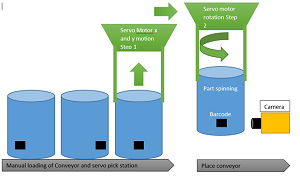
The following is a summary of the intentions behind the Master projects. It does not adequately illustrate the progress being made by these scholars, but it does hint at the pertinence of the research being undertaken for and with industry.
Bryan Crump is an Automation Engineer who is developing a strategy for the optimization of 2D matrix Barcode reading and part placement machinery. His thesis focuses on where the system places objects on a conveyor belt. He is aiming to create a strategy which optimises the placement of objects on the belt to allow the 2D barcode matrix to be scanned by a camera.
He hopes it will be implemented in the pharmaceutical and biological industries. He said: “The objective of this thesis is to define the optimum configuration of the equipment to ensure consistent part placement (within a pre-defined tolerance) whilst minimizing station cycle time and using readily available off the shelf products.”
Kannan Periyaiya is a senior engineer who has proposed an online monitoring platform suitable for machinery protection applications. The monitoring system will utilize the General Electric Bently Nevada 3500 monitoring system. According to General Electric, the system is the “industry’s most extensive selection of machinery measurement parameters combined with software configuration for virtually all monitor options.”
Periyaiya explains that all high-criticality equipment at gas plants is moving to completely online condition monitoring strategies in the future. Thus, the target of his project is to “scope the requirements of connecting these Bently Nevada racks to the existing System 1 Framework to enable continuous vibration monitoring and analysis of all Bently Nevada modules.”
System 1 is a software framework that connects all the vibration measurement hardware at a gas plant and allows the measuring and monitoring of those vibrations. Periyaiya will be implementing his expertise at his current employer, Santos GLNG.
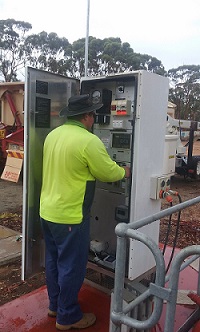
Tom Davies, is an asset and sewerage manager. He is working on the implementation of a lower budget online monitoring system for a rural wastewater/sewerage scheme. He is focusing very specifically on the reliability of such a scheme, and how dynamic the system may be for highly regulated public utilities.
He explains, “At full potential, I see this type of work augmenting works of Professor Duncan Mara at Leeds University in the simplification, increased understanding and effectiveness of a limited budget sewerage scheme. The technology that I am looking at would sit on top of those schemes making effective and reliable wastewater management possible for all rural, and regional economic zones.”
The scheme Davies is proposing would be the first implementation of its kind in the industry. The Shire of Moora, Australia, is supporting the strides he is making and will benefit from the scheme he is proposing.
James Croft is a Control Systems Engineering Support practitioner for a large coal exporter in the Bowen Basin in Queensland, Australia. He has tested and documented state-of-the-art solutions for the Process Control Systems at the BMA Caval Ridge Mine Project. These systems increase the reliability of coal handling. He is also targeting methods which will increase the efficiency of the processing systems in order to attain higher production targets.
Mike Calvert is a metallurgical engineer. He will present his findings on a new control parameter for reflux classifiers on fine coal recovery. He explains that, “The final submission will include a literature review of previous laboratory studies which have progressed to pilot scale tests and then through to early models at full plant scale. The study involves conducting trials at full plant scale, varying the proposed new control parameter and collecting and analyzing samples. It will include a discussion on the new potential for use in a control system to maximize resource recovery.”
Muhammad Naveed-Ul-Hassan works in a nickel smelter providing engineering support in control systems. Many automated initiatives are designed to improve safety (among other benefits), and so it is with this project. The skimming cabins are located next to the converters, exposing the operator to radiating heat and light from molten metal. It is the operator’s job to assess the colour difference between Slag and Matt – a manual process. Muhammad aims to automate this skimming process utilizing state of the art thermal and high resolution IP cameras which will be monitored from a remote cabin. In fact his overall plan involves automating three converters all supervised from a central control room.
Dear Colleagues
We all yearn for that magic formula to success in life and perhaps in our engineering careers, as well. Although I doubt a simple formula exists. However, scientists at University College London have found what they believe are the five key life skills that will bring you health, career success, wealth and overall success.
Five Fantastic Life Skills
- Emotional Stability
- Determination and Grit
- Control of your environment
- Optimism
- And Conscientiousness
You will probably laugh and exclaim that this is all pretty obvious. True enough. But oddly enough - my favorite expression); many of us don’t practice this mantra. And I hasten to also add – what is the definition of ‘success’ and 'happiness' ? I have come across poverty stricken farmers in poor countries who seem to be very happy and seemingly conducting a successful life despite having very little.
This particular research was conducted in a scientific way and seems to make sense. It was conducted by following the lives of 8000 middle-aged Britons for the past eleven years.
Those who didn’t have these skills were seemingly condemned to loneliness, depression and to ill-health. This incidentally also means that even if you are hyper intelligent or from a wealthy background – you may not end up with a successful life if you don't have these skills - as you can see from the qualities listed, many rich people don't necessarily have these.
No single attribute counted – they all contributed towards success. Naturally, in the lottery of Life, many of us are unfortunately condemned to ill health or bad luck due to our genes, environment, war and upbringing.
Other Positive Spin offs
From a health point of view – people with these seemingly five attributes had lower levels of cholesterol, heart disease and inflammation and were fit and lean. Interestingly enough from a community point of view – these people were likely to volunteer more frequently and make a big contribution to society.
Build on them for a Successful Life and Career
In essence, it is important to build on these skills and nurture them throughout your life for ensure good health and happiness well into your dotage. And to use these skills to build your engineering career into something very successful.

Thanks to the Daily Telegraph for an interesting summary of this research.
As Sam Ewing remarks: Success has a simple formula: do your best, and people may like it.
Yours in engineering learning
Steve
Mackay’s Musings – 21st March’17 #644
125, 273 readers – www.eit.edu.au/cms/news/blog-steve-mackay
Is the world finally ready to embrace the significance of technical and vocational skills and in doing so bump higher education qualifications off their pedestals and out of their ivory towers?
The government of the United Kingdom is certainly addressing this traditional imbalance.
They are introducing a new ‘T-levels’ system that will run alongside the customary ‘A-levels’, with a plan to implement it by 2019. ‘T-levels’ would prepare a student for further study in the vocational sector and a student attaining ‘A-levels’ would qualify to enter a higher education college or university.
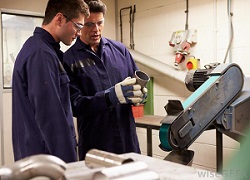
Credit: Wisegeek.com
Experts are hoping that technical and vocational qualifications will gain the reputation they deserve and ultimately achieve an ‘equal-footing’ with degrees which are attained in the higher education sector. It is being called the (long-awaited) ‘technical skills revolution’.
To ensure the reputation is indeed deserved and in order to raise the bar, students pursuing technical and vocational education will be exposed to 50% more study. To gain their qualification they will need to have completed 900 hours of training.
The system that exists today in the UK sees 13,000 individual qualifications being awarded in the technical and vocational sector. Philip Hammond, the Chancellor of Exchequer, who outlined the new T-levels in his budget speech, said that 13,000 qualifications in the technical sector was confusing to students. The government proposes a dramatic cut, with a focus on just 15.
These 15 credentials will cover catering and hospitality, social care, construction and engineering and manufacturing. The new system is hoping to address a widening skills shortage that some fear could be exacerbated by Britain’s exit from the European Union; a move which has now been passed by the UK Parliament.
Richard Black from the Telegraph writes:
“UK universities receive an additional 15 per cent in funding from the EU and some believe the UK could lose this if Brexit happens. It could also mean academics will struggle to cooperate on research projects. A change in visa arrangements for other European countries may also deter high-caliber academics from joining British universities.”
The UK is also encouraging students to apply for apprenticeships in their chosen industries. The UK government has plans to overhaul and improve the quality of apprenticeships with an apprenticeship levy that will see £2.5 billion making its way into technical and vocational sectors.
In addition the country is poised to launch the Institute for Apprenticeships in April of 2017. This Institute will ensure that apprenticeships maintain a level of quality, and create pathways which will enable students to progress.
Is less more?
Ireland’s education system is also undergoing change; they are redefining how their higher education system operates. The Higher Education Authority (HEA) of Ireland is reassessing how effective their engineering education and training is to ensure they remain relevant within a global context. Part of this scrutiny also involves refining the number of engineering qualifications that exist.
Dr Graham Love, the new CEO of the HEA, said that it is a challenging time for higher education, but is looking forward to shaping the future of the system.
“The review will examine the current state of engineering education provision in Ireland to establish if it is fit for purpose, efficient and effective and will make recommendations to better meet national skills needs,” the HEA told the media.
The review, according to the HEA, will also suggest new amendments for “apprenticeship models, professional development for working engineers, and teaching methods.” In accordance with Great Britain there is a concerted effort to raise the reputation and appeal of technical and vocational qualifications.

The right way forward
Emma Bridgewater, a renowned ceramics manufacturer in the UK, has said that the United Kingdom at large is suffering a skills crisis because the engineering syllabi fail to consider the needs of local students and the manufacturing sector. In an interview with The Guardian, she suggested that courses were designed to appeal to international students.
“A lot of vocational courses around manufacturing are evaporating - we are not training to future captains of the industry. There’s a very significant lack of the right courses being devised. I think that education is responding to the appetite among foreign students to study here.”
The unnatural tug of the higher education sector combined with the tempting foreign student market may have both contributed to the burgeoning skills gap. It is not surprising therefore, that engineering experts are optimistic about the proposed T-levels. The Chief Executive of the Federation of Master Builders told the media:
“T-Levels could be the answer if they genuinely rival A-Levels in the eyes of parents, teachers and young people. UK society as a whole has been guilty of putting too much emphasis on the academic route - this has made it more difficult for vital sectors like construction and house building to attract the talented new people we need.”
Works Cited
Black, Richard. "How Will Brexit Affect British Universities and will EU Students Still Be Able to Study in the UK? ." The Telegraph. Telegraph Media Group, 03 Mar. 2017. Web. 13 Mar. 2017.
Hickey, Shane. "'T-levels' Aim to Improve Technical Education and Improve UK Productivity." The Guardian. Guardian News and Media, 09 Mar. 2017. Web. 13 Mar. 2017.
"T-Levels Must Match A-Levels." T-Levels Must Match A-Levels. Web. 13 Mar. 2017.
In 2013, Nicolene Murdoch, the executive director for teaching and quality at Monash South Africa - a higher education institution - said that historically only 15 to 20% of South African students at universities end up graduating.
More recently, in 2015, the Council of Higher Education calculated the dropout rate (or more formally, the attrition rate) of students that had been studying five year degrees countrywide. The research found that 18% of the country’s 18 to 24 year olds entered university in 2015, but of that number 50% - 60% dropped out in their first year of studies.
 Andre Van Zyl, the Director of the Academic Development Centre at the University of Johannesburg, referring to the research, said:
Andre Van Zyl, the Director of the Academic Development Centre at the University of Johannesburg, referring to the research, said:
“Part of what we have to ask ourselves is whose fault is this. We try to give simple answers to complex problems. People blame a variety of things like schools and the universities. The reasons are as complex as the number of those who drop out.”
The Department of Higher Education’s latest report on the topic - Statistics on Post-School Education and Training in South Africa - indicated that only 185,375 people graduated from South Africa’s 26 universities in 2014. Out of that group, 5,680 of them were engineers. How many engineers failed to complete their studies is unknown.
A study conducted at the School of Chemical Engineering at the University of KwaZulu-Natal, published in the South African Journal of Science alluded to various reasons for students dropping out of university. The study’s author, Jonathan Peacock writes:
“The first is academic exclusion of students from a department or faculty as a result of slow academic progress. The second is ‘walking away’ - in other words, those students who leave universities before completing their degrees regardless of progression. The third is financial leavers (or financial exclusion) where students leave because of an inability to continue to fund their studies.”
The high drop-out and failure rate of engineering students in South Africa may also have something to do with a relatively new attitude to Mathematics in the schooling system. Sara Muller, a researcher at the University of Cape Town, wrote in an article published late last year,
“In the past 20 years there’s been a major shift internationally towards thinking of education in purely economic terms (as opposed to critical citizenry, creativity or self-actualization). This reduction of education to purely economic ends, coupled with the conflation between mathematical prowess and problem-solving skills for the “knowledge economy”, has resulted in mathematics being isolated as “essential knowledge”. Its proponents insist that maths is required for an education of value.”
The consequence of this change in attitude has been to push students into studying Maths whether or not they have an inclination to do so, let alone the aptitude for it. She explains,
“To fully appreciate this shift in thinking, South Africans need to suspend their collective amnesia: passing mathematics was not a requirement to move into Grade 10 a generation ago. And yet adults from this era are often economically productive, creative and academically accomplished. Many would publicly acknowledge their own struggles with numbers.”
She points out sagely that,
“The vast majority of jobs of many flavours and incomes do not require the type of maths taught even in Grade 9. This is forgotten when mathematics is positioned as supremely important for the job market, or for students’ personal development.”
The inherent danger of this drive for compulsory maths (and there is evidence of it already) is a drop in standards. And the consequence of this: students who are determined to complete tertiary qualifications in the STEM disciplines (science, technology, engineering and maths) will not cope.
This may indeed be partly responsible for the low numbers of engineering graduates, but it cannot be the only factor. Electrical Engineering students from the University of Pretoria were asked to give a rough guesstimate of what the dropout rate in their modules might be, based on their observations in class. The students reported that 40-60% of those who start out in the first year are not present in final year modules.
One of the students, who asked that his identity not be revealed, said:
“I don’t think the dropout rate is as high as the module failure rate. People fail enough to give up, or fail enough to be told to give up. I think a 60% attrition rate is an accurate amount if you only look at how many of us started and how many you don’t see at the end.”
It is abundantly clear that brick-and-mortar higher education institutions are struggling to retain students in courses across all faculties, but engineering student retention rates appear to be particularly low.

Is online education the answer?
The Deputy Dean of the Engineering Institute of Technology (EIT), Steve Steyn, cut his engineering teeth at the University of the North West in South Africa.
Steyn says that when he studied engineering in 2006, out of a class of 250 students, only 22 graduated. The attrition rates in South Africa have not improved. Engineering remains notorious for being a field of study with large student drop-off numbers 11 years later.
The Engineering Institute of Technology recently introduced prospective South African students to the future of higher education: interactive, online education and training.
Steyn, speaking to a crowd in Johannesburg in South Africa last week, said that EIT’s most recent performance measures revealed the attrition rate to be much lower than figures quoted above. The college is, however, aiming for a retention rate of 80% which it is not yet achieving, Steyn said.
Steve Mackay, the Dean of EIT has been involved in a good number of the publicly accessible Massive Open Online Courses (MOOCS), hosted by top-tier American universities. He has witnessed a 90% attrition rate.
He lamented that a free MOOC course, for the purposes of continued professional development, with 10,000 students initially registered, eventually fell to only 400 (not because of a lack of quality). He points to the absence of interaction between student and lecturer as one of the reasons for the high rate of attrition. He said:
“My suggestion to students: avoid asynchronous online education where possible and instead attend courses where lecturers and students meet in real time, in a video conferencing or a web conferencing format. This is called synchronous online learning. This type of inflexible e-Learning is what drives students to graduate because they are able to ‘meet’ and ‘interact’ with their teachers and fellow students; they become engaged with the content and the learning process. With this platform of education some of our courses have a low 10% attrition rate.”
Works Cited
Comments, News24WireMay 19 201536. "South Africa’s Alarming University Drop out Rate." BusinessTech. Web. 15 Mar. 2017.
Pocock, Jonathan. "Leaving Rates and Reasons for Leaving in an Engineering Faculty in South Africa: A Case Study." South African Journal of Science. Academy of Science of South Africa. Web. 15 Mar. 2017.
http://theconversation.com/pressured-south-african-schools-had-no-choice-but-to-relax-maths-pass-mark-70289
Dear Colleagues
 When you want to raise some money (from the bank, your long suffering business associates or unsuspecting friends) for your next engineering or technology venture – no matter how big or small - there are some items you should remember when composing your inevitable business plan. I am not arrogant enough to suggest that I can summarise the great flood of articles and books on writing business plans in a few words but there are a few useful suggestions below.
When you want to raise some money (from the bank, your long suffering business associates or unsuspecting friends) for your next engineering or technology venture – no matter how big or small - there are some items you should remember when composing your inevitable business plan. I am not arrogant enough to suggest that I can summarise the great flood of articles and books on writing business plans in a few words but there are a few useful suggestions below.
Many of the business plans I have looked at over the years, seem to be overwhelmed with spreadsheets of figures and quantitative data which all lead hopefully to the Holy Grail of enormous riches. As many of us bruised investors know – most tend to end in tears and despair. Herewith a few suggestions on avoiding this fate – whether you are writing a business plan or an investor contemplating one.
The Four Key Factors
William Salman, an accomplished professor (at where else but Harvard?) gives a few valid suggestions on giving emphasis to four key factors in your business plan:
- The People
- The Opportunity
- The Context
- Risk and Reward
The People section should answer the simple questions of what they know, whom do they know and how well are they known in the industry. Do they have a track record in successful businesses or are they optimistic newbies?
Is the Opportunity market at hand large or rapidly growing and is the opportunity presented able to be tackled with some logical method (i.e. it is not a war zone or an area crippled by over regulation)?
Laying out Context is useful but also to understand what happens when there are subtle shifts in the context over time which may change the opportunity dramatically.
Finally, absolute transparency and honesty in the Risks and Rewards part is essential. The optimistic she-will-be-right-mate dissertation never fills one with much confidence and destroys the integrity of the business plan. A hard headed assessment of when the rewards will be arriving and their scale is useful but a considered look at what happens when things don’t quite go to plan are also critical.
With these suggestions built into your next business plan; you will certainly have a document with considerably more integrity.
Thanks to William A. Sahlman who wrote a thoughtful article on How to Write a Great Business Plan from Harvard Business Review.
When it comes to creating the next engineering company, this is so true from John Dykstra: I like engineering, but I love the creative input.
Yours in engineering learning
Steve
Mackay’s Musings – 14th March’17 #643
125, 273 readers – www.eit.edu.au/cms/news/blog-steve-mackay
The United Arab Emirates have continually shown how deep pocketed they are when it comes to funding engineering endeavor.
In the last year, they impressively printed the world’s very first 3D office, and announced plans to build the largest concentrated solar power plant in the world.

Now, they’re moving on to their mobility engineering strategies. They seem convinced that flying taxis are the future. The country unveiled their intention to use EHang 184 drones as self-driving taxis in the near future. The EHang 184 is said to be the world’s first autonomous aerial vehicle.
The Vice President of the UAE, Sheikh Mohammed bin Rashid, says that by 2030, they hope that 25% of all passenger trips will be achieved in driverless vehicles.
In an interview with Bloomberg Business SpaceX and Tesla CEO, Elon Musk, was dubious; he does not think that flying vehicles will fly – so to speak. He believes they will be a safety disaster. He said: “Obviously, I like flying things, but it’s difficult to imagine the flying car becoming a scalable solution. If somebody doesn’t maintain their flying car, it could drop a hubcap and guillotine you.”
Musk would rather utilize a tried-and-tested method of curbing congestion in the modern world: tunnels. The idea stemmed from Musk’s annoyance at being stuck in traffic. He tweeted: “Traffic is driving me nuts. Am going to build a tunnel boring machine and just start digging. It shall be called ‘The Boring Company’.
Credit: MartinJetpack.com
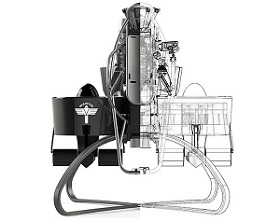
Another company believes that instead of hailing a cab, people will be hailing a jetpack via our smartphones. BBC News recently interviewed the vice-president of innovation at KuangChi Science. He said “Jetpacks will be part of future cities. I see it as being the Uber of the sky.”
The company is working with a New Zealand based aerospace company, the Martin Aircraft Company. They have manufactured an ‘Optionally Piloted Hovering Air Vehicle’ (OPHAV) that flies at 2,800 feet and can travel at 27 miles per hour. On their website, the company says:
“Without doubt the Martin Jetpack is one of the easiest aircraft to fly either manned or remotely with a fly-by-wire system that allows hands-free hover and position hold. When coupled with its advanced safety features, including a ballistic parachute that can open as low as six meters above the ground, the Martin Jetpack now gives operators true freedom for mission focus.”
How long could it be before you see public air-transportation? No one can be certain.
Nonetheless, if self-driving, human-carrying drones are not exciting enough, Sheikh Mohammed bin Rashid also announced the UAE’s intentions to build a city on Mars. The project entitled “Mars 2117” will be a project that will, according to the UAE, see international cooperation. Elon Musk’s SpaceX and NASA hoped to deliver a probe to Mars by 2018, but they have since delayed the operation until 2020.
“Human ambitions have no limits, and whoever looks into scientific breakthroughs in the current century believes that human abilities can realized the most important human dream,” said Sheikh Mohammed in a statement. “The new project is a seed that we plant today, and we expect future generation to reap the benefits, driven by its passion to learn to unveil a new knowledge.”
The ingenuity of man is endless and those who are dreamers often, with the help of engineering prowess, turn their dreams into reality. It will be interesting to keep an eye on these proposed projects. Some may merely be pie in the sky.
Only time will tell.
Works Cited
Jetpack, Martin. "Martin Jetpack." Martin Jetpack. Web. 24 Feb. 2017.
Video, Fortune. "This MegaDrone Will Be a Self-Flying Air Taxi in Dubai This Summer." Self-Flying Air Taxi: Ehang 184 Is Coming to Dubai This Summer | Fortune.com. Fortune, 16 Feb. 2017. Web. 24 Feb. 2017.
Wakefield, Jane. "Tomorrow's Cities: What It Feels like to Fly a Jetpack." BBC News. BBC, 11 Jan. 2017. Web. 24 Feb. 2017.
Calling all Mechanical Engineers! We need tougher robots.
A clean-up and decommissioning of three of the Fukushima Daiichi nuclear reactors, that fell victim to meltdowns after a powerful earthquake and subsequent tsunami in 2011, is underway. The clean-up will cost the equivalent of USD$190 billion.
The first step to decommissioning is locating the spent, melted nuclear fuel. No human can withstand the radiation levels in the reactors. As a result, radiation-resistant robots are being sent down to locate the fuel. But they’re not working as planned.
The team sent their Scorpion Robot down to the No. 2 Reactor on February 16th, 2017. Unfortunately, the high levels of radiation caused the robot to falter and eventually be rendered useless. The radiation caused a belt on the robot’s wheel mechanisms to fail.
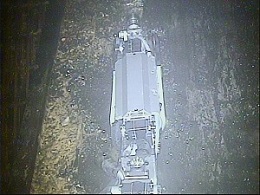
The Robot that failed due to radiation in Nuclear Reactor #2 at Fukushima Daiichi
Credit: The Tokyo Electric Power Company
Two other robots were also abandoned after one became stuck on its way to where they think the radioactive spent fuel is, and the other after failing to find the fuel. One of the robots’ cameras actually began to malfunction due to the high levels of radiation on one of the attempts.
Tokyo Electric Power Company Holdings, Incorporated, Scorpion Robot: https://www.facebook.com/OfficialTEPCOen/videos/1348040575255238/
The reality is, the Tokyo Electric Power Company (Tepco) needs smarter and tougher robots - a fact the Director of Decommissioning has admitted.
Toshiba manufactured the Scorpion Robot and are now purportedly developing the robot that is needed to probe the most damaged reactor, Reactor No. 3. The company will have to go back to the drawing board to ensure this new robot will withstand and survive the radioactive material.

Toshiba’s engineers initially thought their Scorpion robot had the capacity to weather the radiation but realised more work to make them radiation-proof is needed. The engineers must perform a more rigorous process of ‘radiation hardening’ to ensure these next iterations do not succumb to the same pitfalls.
Despite being abandoned, the failed robots have provided engineers with some indication of where their weaknesses were - the location of the melted material. To fully ascertain why they miscarried, without having them at hand, would be difficult and will prove challenging when designing the tougher and smarter versions.
President of Decommissioning, Naohiro Masuda, said: “We should think out of the box so we can examine the bottom of the core and how melted fuel debris spreads out.” Tepco wants to have the decommissioning process completed by 2021.
The Daily Mail has released drone footage of the abandoned town. This year would mark the sixth year since the earthquake and tsunami.
Works Cited
Wehner, Mike. "Japan’s Failed Nuclear Reactor Is Still so Radioactive It Almost Killed a Robot." BGR. 14 Feb. 2017. Web. 08 Mar. 2017.
Yamaguchi, Mari. "Fukushima Cleanup Chief Urges Better Use of Probe Robot." Japan Today. Web. 08 Mar. 2017.
The prosperity of many industries hinges on the sucess of engineering innovation and endeavor.
Unfortunately engineers are often only remembered once their well oiled machines, that thrust society forward, stop working. And sometimes they don’t get the recognition they deserve. The Queen Elizabeth Prize for Engineering has tried to change that disappointing fact.
First awarded in 2013, the QEPrize sets out to aard engineers for their innovation in engineering, with specific focus on innovation that has globally benefited humanity.
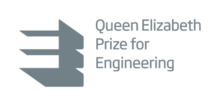
This year, the QEPrize was awarded to Michael Tompsett, Eric Fossum, George Smith and Nobukazu Teranishi. They received £1 million as recognition for creating the technology that allows us to take ‘selfies’ with our smartphones.
Celebrating the culmination of thirty years of work, these engineers were lauded for creating the “charged couple device (CCD), the pinned photodiode (PPD) and the complementary metal oxide semiconductor (CMOS). Basically, the technology that has improved the quality of the photos we capture with our smartphones today.
The engineers have promised to use the prize money to create a scholarship that would encourage females to follow their engineering dreams.
Despite the prize engineers will continue to go unrecognized; some will receive it, but only after very many years.
The Black Box
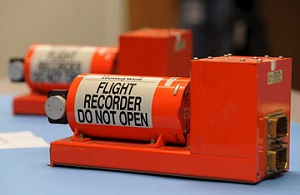
David Warren, the Australian inventor behind the flight data recorder and cockpit voice recorder (or as we like to call it, ‘the black box’) waited 50 years for his 15 minutes of fame. Warren engineered the ‘black box’ after the first commercial airline disaster in 1953. He said:
“There were no witnesses, there were no survivors, and there wasn’t any obvious reason for what had caused it. Now, you gotta find out what caused it, to stop it from happening again.”
Warren came up with the idea for the recorder after visiting a fair and observing a miniature personal voice recorder that typists would use to type up transcripts of what their bosses wanted them to. He implemented a similar system into his first prototype for the black box.
The in flight recorders crucial to airplane crash investigations we know today, are all thanks to David Warren. It was only in 2002 that he was recognized and deemed the Officer of the Order of Australia (AO) for “service to the aviation industry, particularly through the early conceptual work and prototype development of the black box flight data recorder.”
Years later, David Warren’s son, Peter, has said he believes that “scientists and people of vision”, in Australia, are not sharing their innovations with the world because of a “colonial mindset” that has made them believe that they are not able to innovate for a global market.
Hidden Figures
The President of the United States, Donald Trump, in a recent signing of an executive order, encouraging the hiring of women in STEM fields said:
“Today I’m signing two bills that promote women entering and leading the STEM fields - science, technology, engineering, and math. Currently, only one in four women who get STEM degrees is working in a STEM job - which is not fair…”
There is a battalion of women in STEM fields that have paved the way for the future women engineers, however. They are only now getting their names stamped into the history books and Hollywood movies.

The true-story-turned-movie, Hidden Figures, is a story that encourages not only females to follow their dream careers in STEM fields, but encourages black women to do it too. The film follows the black mathematicians that assisted NASA with their expertise in the Space Race.
Margot Shetterly, the author of Hidden Figures, the book the movie is based on, spoke to Al Jazeera:
“They happened to be very talented, good at their jobs, mathematicians, scientists, engineers, but they were also just normal people. I got an up-close look at the fact that science could be done by anyone.”
Shetterly’s father was a climate scientist at NASA’s Langley Memorial Aeronautical Laboratory. Based on her research, she reports that, in 1970, 1% of Americans engineers were black. It had risen to 2% by 1984.
In an excerpt from the book, Shetterly writes that at least 50 black women were involved in mathematical, scientific and engineering roles from 1943 to 1980:
“NASA’s African American employees learned to navigate their way through the space agency’s engineering culture and their successes in turn afforded their children previously unimaginable access to American society.
Of course, there is a long history of not giving female STEM professionals the recognition they deserve. The media forget to applaud the women who helped put American men on the moon.
Margaret Hamilton, a systems engineer who wrote the code that defined the Apollo 11 mission, was awarded the Presidential Medal of Freedom by Barack Obama in 2016.
She was the Director of the Software Engineering Division of the MIT Instrumentation Library. She and her team developed the on-board flight software for the Apollo space program.
In a photo she is seen standing next to the books of code she wrote.

Margaret Hamilton with her code, lead software engineer, Project Apollo
Source: Wikipedia
If history is anything to go by, the future of STEM professionals (male and female) is bright. And hoefully, at some point, they will be recognized for the work they are doing today.
Works Cited
AlJazeeraEnglish. "The Stream - NASA's 'Hidden Figures'" YouTube. YouTube, 15 Sept. 2016. Web. 28 Feb. 2017.
"Hidden Figures: The History of Nasa's Black Female Scientists." The Observer. Guardian News and Media, 07 Feb. 2017. Web. 28 Feb. 2017.
Shetterly, Margot Lee. Hidden Figures. Place of Publication Not Identified: William Collins, 2016. Print.
Tovey, Alan. "The Engineers Who Made 'selfies' Possible Share £1m Prize." The Telegraph. Telegraph Media Group, 01 Feb. 2017. Web. 28 Feb. 2017.
Chances are, if you work in an office environment, you’re faced with the temperature dilemma: you are either too hot or too cold. This is exacerbated in an open plan office space; an environment where the aircon’s remote becomes a highly disputed weapon. And it’s all thanks to engineers!
According to renowned Australian author and science commentator, Dr Karl Kruszelnicki, the world sees 20% more air conditioning unit sales yearly.
He makes a very interesting assertion regarding the dispute over optimal office temperatures in modern day offices. He says that air conditioning units benefit men only.
He writes: “You know what I mean - the men are fine in shirt sleeves, but the women have to wear cardigans and scarves.”
Kruszelnicki chalks it up to the air conditioning standard that has been used for the last 50 years; Standard 55.
Standard 55 first made its appearance in 1966, when the American Society of Heating, Refrigeration and Air Conditioning Engineers decided to compile a long list of factors that would impact the ventilation and air conditioning of buildings.
One of the items on the checklist included the clothes that workers wear. “And you guessed it, the human they chose to base that on was a 40-year-old man, weighing 70 kilograms, and dressed in full 1960s business suit,” Kruszelnicki said. Interestingly even the metabolic rate of an individual was considered, a man’s metabolic rate.
It is well known that metabolic rates in men and women differ in most cases. It is this fact that results in women reacting differently to temperatures compared to men.
Kruszelnicki thinks that changing the indoor temperature from 22 to 25 degrees Celsius will level the playing field and empower both sexes.
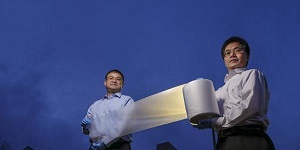
Engineers are, however, working to completely redefine the game.
At the University of Colorado Boulder, Xiabo Yin and Ronggui Yang have developed a metamaterial that might change the entire HVAC industry. Working on a USD$3 million budget from the Department of Energy’s Advanced Research Projects Agency-Energy (ARPA-E), the pair created a “glass-polymer hybrid”, which was placed under a layer of silver.
They have published a journal in the Science journal. The report is entitled Scalable-manufactured randomized glass-polymer hybrid metamaterial for daytime radiative cooling.
The material can be spread out on a roof and deflect any solar radiation that it receives. The engineers say it can “cool objects under direct sunlight with zero energy and water consumption.”
The material is just a fraction thicker than aluminium foil, measuring 50 micrometers.
“Just 10 to 20 square meters of this material on a roof could nicely cool down a single-family house in summer,” said Gang Tan, an associate professor at the University of Wyoming’s Department of Civil and Architectural Engineering. The engineers add that it could also benefit thermoelectric power plants.
“We feel that this low-cost manufacturing process will be transformative for real-world applications of this radiative cooling technology,” said Xiaobo Yin, the co-director of the metamaterial research.
Furthermore, Yin commented that the material can be placed over solar panels. “Just by applying this material to the surface of a solar panel, we can cool the panel and recover an additional one to two percent of solar efficiency. That makes a big difference at scale.”
Heavy energy consumption
The metamaterial might be able to reduce more energy consumption than Australia’s proposed solar powered air conditioning units. The Department of Environment and Energy tested solar-powered air conditioning systems last year.
The Department tested different units in two categories: ‘solar thermal’ and ‘solar photovoltaic air conditioners’.

Example of a solar thermal cooling air conditioner
Source: http://homeservicenowvisalia.com/
The hope was that the solar thermal units could become the new kid on the block and would drive down electricity bills for buildings all over Australia. However, in a report, the Department of Environment and Energy called the units a “marketing gimmick that offers no improvement in the performance or amenity of the air conditioner.”
The photovoltaic alternative proved to be inefficient too; the air conditioner only worked at 75% of its capacity.
As a result, the units in question were removed from the market. Experts are instructing consumers to buy efficient, energy saving air conditioners before putting money down on inefficient solar competitors. The technologies will inevitably improve with and costs reduce in time.
Works Cited
"Chill Out! Newly Engineered Material Can Cool Roofs with Zero Energy Consumption." Mechanical Engineering | University of Colorado Boulder. Web. 01 Mar. 2017.
"Freezing in the Office? It's Because Air Conditioning Standards Are Sexist." Radio National. 27 Feb. 2017. Web. 01 Mar. 2017.
Dear Colleagues
 Being an objective engineer, I have always been cautious about (whether soft signals from) body language have much impact on how you are perceived but I must say ongoing research shows that it does have a huge impact.
Being an objective engineer, I have always been cautious about (whether soft signals from) body language have much impact on how you are perceived but I must say ongoing research shows that it does have a huge impact.
So here are some really great suggestions on improving your response from others especially at your next engineering presentation with the use of effective body language cues ….I believe you will find these tips really work. If they don’t - please let me know. Obviously, I am not suggesting you will be a magician after using these techniques but they should help significantly in getting your message across.
Six Quick Ways to Project Confidence with Body Language
The Clinton Box – trustworthy, truthful
Avoid wide sweeping gestures and keep your hand movements to a box in front of your chest. You will be perceived to be telling the truth and have honest characteristics.
Holding the Football – mastery, control and confidence
Talking as if you are holding a football firmly in your hands shows control and mastery of a subject.
The Pyramid of Cheops – relaxed and at ease
Clasping both hands together in a relaxed pyramid in front of you, shows that you are relaxed and at ease with the world.
Wide Stance (with feet well apart)– in control
If you stand with your feet about a shoulder width apart, you are showing that you feel confidently in control.
Palms Open and Up – transparency and honesty
This is widely accepted as showing honesty and friendliness. Use it to defuse tension in the other party.
Palms Down – Strong and Dampening emotions down
When you use your palms down, you can calm a strident audience and show that you are strong.
Try these tips at your next presentation or indeed when you are talking to someone you don’t know very well in the street. You will be surprised at well they work.
Thanks to Kasia Wezowski, the founder of the Center for Body Language for some interesting research.
Peter F. Drucker makes a valid comment about non-verbal cues in connecting to people: The most important thing in communication is hearing what isn't said.
Yours in engineering learning
Steve
Strides are continually being made in road safety engineering. Making roads safer and more efficient is the work of civil engineers across the globe. The safest option would be automating all cars around the world. Ford, Google, Mercedes-Benz, Tesla and Uber are looking at their implementation in the United States by 2021, but that is still some time away and there are still a few kinks that need to be addressed.

Consequently, engineers are in charge of producing novel approaches to road safety up until human error can be taken out of the equation.
America’s Guardrails
In a report by the U.S. Department of Transportation's Federal Highway Administration, transportation engineers have taken a second look at what affects the crashworthiness of a guardrail.
“Because these crashworthiness tests are conducted with vehicles traveling at a speed of 100 kilometers per hour (62 miles per hour), if a vehicle hits a guardrail at a higher speed, the guardrail may not operate optimally.”
The Colorado Department of Transportation recently inspected their guardrails state wide. They found that 144 sections of guardrail would not be able to absorb the energy of a crash, which in turns put their drivers in danger.
The Federal Highway Administration was defrauded in 2005 by an engineering company known as Trinity Industries. Trinity changed the design of their guardrails without alerting the Administration. The guardrails were found to be unsafe, failing to prevent eight or more deadly accidents.
The following situation reveals the complexity involved. Recently the Department of Transport’s Spokesperson Mark Nagi was required to respond to questions about a crash on a road that had neither guardrails nor barriers.
The crash occurred in Cumberland County in Maine in November 2016. A truck barrelled from the eastbound roadway into the westbound roadway and smashed into a car hauler and another passenger vehicle. The three drivers involved in the accident died.
“We simply cannot design or construct a guardrail that is completely safe in every situation. There is always a hazard associated with a vehicle hitting a guardrail,” Nagi said.
According to InterestingEngineering.com, 1.25 million die as a result of a road traffic crash. These crashes sometimes involve motorists losing control and hitting guardrails.
This issue aside, engineers are trying to figure out how to implement a ‘one size fits all’ approach to guardrails. They know that the speed at which a vehicle approaches a guardrail and the size of the vehicle, could produce several different results.
The question is: Can guardrails be designed to prevent horrible accidents and death?
The new designs
Korean engineers from a company named ETI Ltd. believe they have re-invented the guardrail. They believe that their design will ensure a safer guardrail collision.
The barriers have aptly been named ‘roller rails’. High-speed impacts, as shown on the video, redirect the car back into the lane the car initially came from through rotational energy. This is compared to the alternative, which would be hitting a guardrail straight on and seeing a sizable amount of damage as a result.

The video has been shared around the internet and subsequently gone viral. However, the designs are not entirely new. An Australian company named KSI Global had virtually identical guardrail designs years ago; shown in a video that dates back to 2014.
“Safety roller will minimize the damage of people and vehicles by absorbing collision shock,” says KSI Global. The company also says installation and maintenance costs will be significantly lower compared to traditional guardrail installations.
The rolling barrier system is yet to be adopted by the majority of countries; however a trial is being run in Malaysia.
The one concern with this system that has experts worried is that cars will be deflected back into other cars.
Works Cited
Sorokanich, Bob. "This Roller Guardrail Seems Brilliant, Except For One Major Problem." Road & Track. 10 Feb. 2017. Web. 21 Feb. 2017.
Tegna. "10Investigates: Guardrail Guidelines." WBIR. Web. 21 Feb. 2017.
"This New Korean Rolling Barrier System Could Save Millions of Lives." Interesting Engineering. 20 Nov. 2016. Web. 21 Feb. 2017.
Engineers and scientists have a profound impact on society. The businesses that utilize STEM careers are the tools that build the gross domestic product of a country. Their inventions and innovations change the way the world does things all the time.
However, in the modern day blur of news from media outlets, we seldom hear of the engineers who are tirelessly innovating and working to keep things running. Mostly the focus is on the individuals who preside over engineers, the Elon Musks, the Steve Jobs and the Richard Bransons of the world.
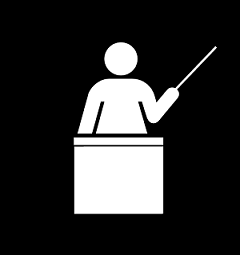
Engaging the public
The Associate Dean for Iowa State University’s College of Engineering, Sriram Sundararajan wants this to change. He believes scientists and engineers need to make a concerted effort to communicate with the public
He says that it is not enough for engineers to merely publish technical journals, they need to think about ways to engage the public.
“Being able to communicate effectively to multiple audiences is an important skill for scientists and engineers. And so we want to help faculty and graduate students develop a broader impacts portfolio,” he says.
Iowa State University has created an initiative incorporated into a graduate course that will help STEM graduates communicate their projects to the public. The initiative is named ‘Strengthening the Professoriate Initiative’.
Resources will be made available to faculty members, postdoctoral research associates and advanced graduate students to encourage them to expand on their expertise. The aim is to assist them generate further research and development and to engage the public in their grant proposals and research projects.
The graduate course will focus on how technical work can be applied to benefit society. It will clarify how their engineering designs impact the society they live in.
“You need to encourage individual faculty and graduate students to develop broader impacts and public engagement. You need to develop a structure to provide them with the tools they need to be successful,” said Sriram Sundararajan
Why engineers should speak out
Professor Dereck Sparks, an Emeritus Associate Professor of Foundations and Soil Mechanics at the University of Cape Town says that civil engineers should speak out against political interference in engineering. He writes:
“As civil engineers we cannot run away from politics. When we see faults, we should supply alternative ideas, because inaction is not an excuse. Politicians and persons who do not have a proper professional training in civil engineering should not be making decisions relating to the nature and location of major civil engineering works.”
He initially wrote his journal entry in response to the misappropriation surrounding the upgrading and building of stadiums for the 2010 Fifa World Cup. However, what he asserts remains true today.

When accidents happen in engineering industries, it is revealed that ill-maintenance is to blame. Recent evidence shows that the government of Oroville, California were warned, twelve years ago, about the recent erosion of the spillways at the Oroville dam. The erosion has caused the evacuation of more than 100,000 people due to concerns of flooding.
Perhaps if these engineers had been more vocal, they could have helped prevent the disaster. Engineers should be speaking up and engaging the public on matters that directly affect them.
Engineers and politics
A more positive example of how politics has directly led to a shift in the engineering community is the politicization of global warming. The politicization of globally rising temperatures has led to a huge boom in renewable energy technology manufacturing.
Although there are alternative views on this: the President of the United States, Donald Trump, wrote on Twitter in 2012: “The concept of global warming was created by and for the Chinese in order to make U.S. manufacturing non-competitive.”
Needless to say, some scientists and engineers are concerned about their futures in industries that profit from global warming research and development.

A nonprofit organization named 314 Action (314 being a reference to the number for pi) wants to train individuals in STEM (Science, Technology, Engineering, Mathematics) jobs in hopes that they could become eligible to run for office in the United States.
The group believes that climate change, next to terrorism, is one of the “greatest challenges facing this generation.”
“The goal is not to politicize science, but to get [STEM graduates] involved in politics. When the man who is to lead this country claims climate change is a hoax, we need people willing to stand up for the facts,” said founder of the group, Shaughnessy Naughton.
The Dean of Engineering of the Engineering Institute of Technology, Steve Mackay, has also suggested that engineers get involved in politics:
“You have to get involved because you, as engineering professionals, have something more than most of those in parliament; you have an objective. Parliaments are riddled with lawyers, accountants and people that perhaps don’t have the necessary technical knowledge to make considered technical decisions. You have the potential to make a major contribution.”
Works Cited
IowaStateUNews. "Iowa State Engineer Addresses Need for Scientists, Engineers to Engage the Public." EurekAlert! Web. 22 Feb. 2017.
"Sign Our Letter to President Trump." 314 Action. Web. 23 Feb. 2017.
Sparks, Dereck. "Civil Engineers Should Speak out." Dereck Sparks. South African Institution Of Civil Engineering (SAICE), 01 Sept. 1976. Web. 22 Feb. 2017.
Sin City just became ‘holier than thou’. The gambling capital of the world, Las Vegas, is now completely powered by renewable energy. Or is it? It seems that Las Vegas’ plans to move toward 100% renewable energy has produced some misinformation.
Popular Mechanics, a well known engineering news magazine, posted a fake story about Vegas back in December 2016. The story professed that Las Vegas was “the largest city in the country to run entirely on renewable energy.”
The city does indeed have a large-scale solar facility, but only the city’s government buildings are being powered by the sun. The facility in question is the Boulder Solar 1, a facility that opened its doors in December 2016. And it is impressive; it will reportedly save the city of Las Vegas USD $5 million.

NV Energy, the company in charge of Vegas’ large-scale renewable projects just brought Boulder Solar II online as well. It will produce 550 MW of solar energy for Las Vegas. These two projects are not alone, they joins 43 other renewable energy projects that are currently operating in Nevada.
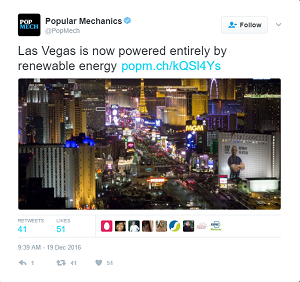
Title: Popular Mechanics publishes Fake News
Credit: Popular Mechanics Twitter
A common misconception is also at play. The vibrant-looking hotels and casinos, pictured in a host of movies, are not in the city of Las Vegas; they are in two unincorporated towns named Paradise and Winchester, Nevada. They are governed by Clark County.
In other words, none of these hotels or casinos are being powered by renewable energy; they remain dependent on fossil fuels to a large degree. Popular Mechanics, and other news channels that ran the story, had to re-word their articles.
Not even close
Writing for Forbes, Robert Rapier, a chemical engineer wrote:
“With natural gas generating four times the electricity of renewables for the state, it isn’t mathematically possible for Las Vegas to be running entirely on renewables. Per EIA data Las Vegas runs primarily on natural gas. This is a major accomplishment for the Las Vegas city government, but it is important to note that its energy consumption is a tiny fraction of the overall city.”
However, perhaps the hopeful, inaccurate headlines present an interesting topic of conversation for the future. With casinos running 24/7 in ‘Vegas’, perhaps it is time to actively pursue renewables for the commercial sector - especially for those cities that ‘never sleep’.
Setting examples
Engineering companies and the commercial industry are continually being encouraged to make use of renewable energy technologies in their manufacturing and industrial operations.
The U.S. Energy Information Administration (EIA) published a report in 2012 named: Commercial Building Energy Consumption Survey. In their summary, they concluded that the energy used in commercial buildings was produced by: electricity (61%), natural gas (32%), district heat (5%) and fuel oil (2%).

However, companies have begun to take matters into their own hands. Electronics engineering company, Apple, have joined an initiative named RE100. The initiative encourages companies to move all of their operations toward renewable energy. Be it the powering of their stores, or the manufacturing of their items.
Apple, by 2015, had been operating 93% of their global operations with renewable energy. Lisa Jackson, Apple’s vice president for Environment, Policy and Social Initiatives, said:
“Apple is committed to running on 100 percent renewable energy, and we’re happy to stand beside other companies that are working toward the same effort. We’re excited to share the industry-leading work we’ve been doing to drive renewable energy into the manufacturing supply chain, and look forward to partnering with RE100 to advocate for clean-energy policies around the world.”
Other companies which have joined the initiative include: IKEA, Adobe, Autodesk, BMW Group, Coca-Cola Enterprises, Facebook, General Motors, Google, and more.
Adding global pressure
Greenpeace South Africa have also realized how useful renewable power could be in a country where the power utilities are sometimes overwhelmed.
They recently released a report named: Shopping Clean: Retailers and Renewable Energy. The group wrote:
“If Woolworths, for example, were to be 100% renewable energy powered, this would liberate enough electricity for 55,000 households in South Africa. Pick n’ Pay’s electricity consumption is enough to power 65,000 households while Massmart and Spar could power 53,000 and 5,400 households respectively.”
Whilst the hope is that companies will migrate their operations over to renewable energy, as the confusion around Las Vegas shows, it is not as easy as just writing it into existence. Engineers need to be consulted and plans put together to ensure that efficient technologies are available for malls, hotels and casinos, the business sector at large, and manufacturing industries.
Perhaps one day you’ll be pulling the lever on a slot machine powered by a wind turbine. A fact that may be a consolation for the money you may be losing!
Works Cited
"Apple Joins RE100, Announces Supplier Clean Energy Pledges." Apple Newsroom. Web. 20 Feb. 2017.
Rapier, Robert. "Sorry, Las Vegas Isn't Close To Running Entirely On Renewable Energy." Forbes. Forbes Magazine, 29 Dec. 2016. Web. 20 Feb. 2017.
Account, Popular MechanicsVerified. "Popular Mechanics (@PopMech)." Twitter. Twitter, 20 Feb. 2017. Web. 20 Feb. 2017.
At EIT we are blessed with an international group of extremely professional, experienced , knowledgeable lecturers who set us apart from other institutions. In a bid to recognise and reward excellence in teaching and professional training by recognising the top three lecturers who go above and beyond the standard requirements of the position, we introduced the annual Award for Excellence in Teaching and Professional Training.
Every EIT lecturer was assess against a predetermined set of criteria which included student and employer satisfaction ratings, responsiveness, participation in scholarly activities, contribution to content and levels of student support.
After a long deliberation process we are happy to announce the winner of the 2016 Award for Excellence in Teaching and Professional Training is Deepak Pais.
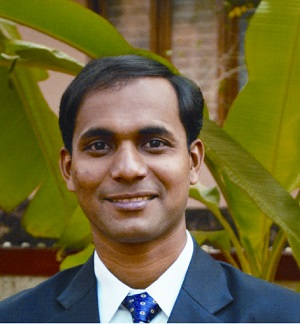
Deepak started his career within the Zinc mining & smelting industry as Project Engineer in Substation & Distribution Greenfield project. He then worked in a Marine and Logistics firm in the Bahamas as maintenance and Commissioning Engineer. Following this he worked with Japanese and German automobile firms as Maintenance Engineer for Distribution and Utility related systems. He currently works as an Engineer in a regional NSW electricity Distribution utility. Deepak has hands on experience in Distribution, Utility and Substation related systems. He has a particular interest in the consistent interpretation and implementation of Greenfield and Brownfield Standards with an emphasis on safety, reliability, economy and whole of life cost analysis. Deepak has been lecturing for EIT for several years on both vocational and higher education programs in the School of Electrical Engineering. He is dedicated and enthusiastic lecturer who is extremely popular with EIT staff and students alike.
1st Runner-up: Hadi Harb
2nd Runner Up: Tom Neillings
Dear Colleagues
 There are some frightening statistics about the number of people who would like to leave their jobs…some figures quote up to 70% of workers. Obviously, a huge number of unhappy people out there. Particularly in engineering with its hard drive, unrelenting need for precision, production and peak work loads (often around projects) and unpleasant persistent competition from other lower cost businesses. All placing high levels of pressure and stress on people.
There are some frightening statistics about the number of people who would like to leave their jobs…some figures quote up to 70% of workers. Obviously, a huge number of unhappy people out there. Particularly in engineering with its hard drive, unrelenting need for precision, production and peak work loads (often around projects) and unpleasant persistent competition from other lower cost businesses. All placing high levels of pressure and stress on people.
Before You Quit
Before you quit – however – consider jumping off the treadmill for a while – even for a very short time so that you can catch your breath and ‘recalibrate’. Bear in mind that changing to a new job may result in exactly the same problems that you currently have.
Stopping for a while, while still staying in your current position, will allow you to reflect on what the real problems are. This allows you to look at your environment objectively, perhaps in changing your attitude to work or in allowing you to cool off and to approach the job from a new perspective.
Signs you Need to Recalibrate
Some signs that you may need to rethink about what you are doing at work range from:
- You hate your job and on Sunday evenings have a deep feeling of dread for the next day.
- Your work peers start muttering about your contribution to the firm.
- Friends and family try and get you to take a well deserved break
- An (often unpleasant) life event occurs
- An unbelievable opportunity comes up
- You start finding your job increasingly challenging because of change
A variety of ways of getting off the Treadmill
Getting off the treadmill can vary widely from a few minutes per day to six months ‘sabbatical in Italy’.
There are a huge variety of ways that you may use to get off the treadmill. The one most spoken about is where you have accumulated a huge amount of leave and you disappear overseas with your dearly beloved for six months and can come back to your job after your vacation. Over this time you can really ponder on where you want to be – well away from the tumult of the job.
Others ways of taking a break are changing your fitness regime and getting a personal fitness coach or practising for a charity bike ride meaning that you undergo a particular intensive fitness regime over many months forcing you to change routines and mental focus.
The simplest one however is to take a deep breath every time you walk into the office and mutter a mantra to yourself about what you are doing to do that day and how you are going to interact with your fellow travellers.
What do you do then?
The trick with these activities is to distance yourself from the job and its (perhaps perceived) problems and environment and to consider them from a distance. It is useful however to write down what the issues are and how long you are going to linger over the problem before re-engaging with it again.
But the important thing is to take the challenge on board and to do it now.
Thanks to Rachael O’Meara for an interesting article entitled: Pause: Harnessing the Life-Changing Power of Giving Yourself a Break in Harvard Business Review.
Perhaps the ideal engineering job is encapsulated in the comment from Ben Shneiderman who said: Leonardo Da Vinci combined art and science and aesthetics and engineering, that kind of unity is needed once again.
Yours in engineering learning
Steve
In 2016, the United Nations declared that the internet was to be considered a human right, like running water.
The U.N. has enduringly struggled to enforce international law so for this issue the ruling was met with some criticism. Widespread access to the internet is further complicated in certain countries, such as North Korea and China, who regulate their telecommunications.
The Internet of Things - and the oncoming fourth industrial revolution - will be exposing the internet to an even wider audience. Thanks, in most part, to the engineers who are continually innovating in the telecommunications sector.
This technological expansion will have a profound effect on industry and society as a whole, but presents a unique opportunity for education. Especially, education in third world countries.
Internet infrastructure
Internet infrastructure in Africa has largely leapfrogged the continent over the old technologies and embraced new broadband technologies.
As 4G networks like LTE-Advanced (LTE-A) and LTE-Advanced Pro (LTE-A Pro) make their way into Africa, the 5th generation networks are in the beginning stages of being tested in the United States and Europe.
Deloitte Global’s research report revealed that, at the end of 2016, “over half of all models of 4G [smart] phones were LTE-A capable”. Technologies that can facilitate digital learning are being engineered to work more efficiently yearly. However, they need to be engineered with the third world in mind.
ADSL (Asymmetric digital subscriber line) broadband technology, especially in South Africa, is slowly being phased out due to the rampant criminality surrounding the technologies. The internet is transmitted through copper telephone lines and this copper is regularly stolen and sold on black markets.

Fibre optic cables / Pixabay.com
It is estimated that cable theft has cost South Africa $321 million. One of the main internet utilities in South Africa, Telkom, forked out $12.8 million in 2016 alone to repair cable theft damage and to appoint security companies to prevent it from happening.
As a result, engineers are trying to move from ADSL to more secure, wireless networks; LTE and fibre. They have replaced the dated technology with technologies that can be accessed wirelessly by the end user. Then there are wired fibre technologies. Thankfully for the telecommunications companies, fibre is not a valuable commodity to criminals looking to make a quick buck.
Infrastructure = education
Europe’s leading HR and learning analyst, Fosway Group, conducted a survey targeting 1,000 learning and development professionals.
The results indicate that there is a general belief that digital learning improves learning availability, speed of learning and learner engagement. The CEO of Fosway Group, David Wilson commented:
“It’s important to uncover the realities of digital learning to get to the heart of what’s really working - and not working - for organizations in practice as well as their experiences with digital learning suppliers. It’s about more than just the tools and technologies.”
Their report also revealed that education platforms which host video learning and mobile learning are seeing an increased demand from consumers, compared to traditional on-campus alternatives.
The one determining factor delaying high quality, widely accessible internet, is access.
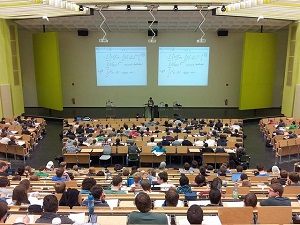
Once internet infrastructure is established, with affordable data rates, basic and higher education distance learning platforms will undeniably be set up.
The final hurdle, for impoverished communities, is gaining access to physical hardware that will be able to make the most of the established internet infrastructure.
A novel approach being tested around the world is making online curricula available to less privileged communities and rural areas. This content is being compiled by some of the best higher education institutions.
Telecommunication engineers are facilitating this revolution in education. Educators, however, need to actively investigate how they can best exploit it to benefit their students.
Works Cited
"TMT Predictions 2017: Overview | Technology, Media, and Telecommunications." Deloitte Luxembourg. 20 Jan. 2017. Web. 06 Feb. 2017.
L&D. "The Key Drivers for Digital Learning." L&D. Web. 06 Feb. 2017.
Potgieter, Quintus. "Cable theft leads to LTE and fiber push for South Africa" Home - Engineering Career. Web. 06 Feb. 2017.
When natural disaster strikes, infrastructure suffers: buildings, roads, power supplies, water, lighting.... In the aftermath, the helping hand of others is sometimes the only thing that can soften the blow. But in some cases, in the long term, it can do more harm than good.

Foreign aid has often been likened to ‘giving a fish to a person who is hungry’. Philanthropy, on the other hand, is more about ‘teaching someone how to catch a fish so that he can fish in the future too’. The lines do, however, get blurred.
For instance, in the name of philanthropy, many engineering technologies are doled out to impoverished nations. Like the analogy of providing just the fish to the hungry, the gesture may appear commendable, but it is worthless if a nation is unable to apply the technologies meaningfully.
It can even be counterproductive: foreign aid can create a dangerous dependency, destroying local entrepreneurial endeavour and collapsing markets. The practice has faced criticism, most notably in a documentary named Poverty Inc.
The solar streetlight business
In the Poverty Inc. documentary, a specific example of foreign aid is seen to directly disrupt a renewable energy company in Haiti, after the earthquake of 2010.
Credit: Inter Press Service News Agency (http://www.ipsnews.net/)
3.1 Haiti's solar entrepreneurs from POVERTY, INC. | The Movie on Vimeo.
Enersa, a company that trained lighting technicians to engineer solar panels for streetlights in Haiti, was impacted negatively by foreign aid. Enersa is completely owned and operated by Haitians. One of the co-founders of the company Jean-Ronel Noel, learned how to manufacture solar panels on the internet. He used MIT’s free online course materials to learn how.
“I was able to use the OpenCourseWare to learn the principles of integrated circuits. I found out that I could use an existing integrated circuit to make things more efficient, and I wanted an explanation about how it worked. I was able to learn this through the MIT OpenCourseWare,” he said, in an interview with OpenCourseWare.
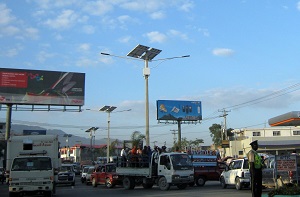
After the earthquake, NGOs donated solar technologies to the earthquake-effected country and Enersa’s sales fell; the company went from selling 50 solar panels a month to selling only 5.
The Clinton Foundation, founded by Bill and Hillary Clinton, had allegedly invested in green energy in Haiti to boost its recovery. The foundation, with the help of NRG Energy and the Solar Electric Light Fund (SELF) donated the solar streetlights to Haitian communities. On their website, they said:
“The solar streetlights that the Clinton Foundation provided are particularly important for these communities…”
African experts perceive foreign aid to be a problematic force that precludes African artisans, technicians and engineers from gaining the benefits of entrepreneurial profit due to the barrage of free technology dumped on them.
Steve Mackay, the Dean of Engineering at the Engineering Institute of Technology, believes that the foreign investment of technologies into poorer nations needs to be approached cautiously and thoughtfully. In his video named The Barefoot Engineer, Mackay said:
“One of the critical things when you do get involved with projects in the developing world is to avoid highly sophisticated infrastructure or advanced manufacturing. The trick is to go for barefoot engineering. This involves the use of practical, robust technology appropriate to the needs of the community you’re in.”
Alongside this more circumspect approach to donating technology, is training and education not essential too? With this expertise there would be growing numbers of those with the skill and the means to ‘fish’ for themselves. Coordinating and delivering education may be considered too challenging logistically, but then with the new online teaching technologies abounding many opportunities are emerging.
Engineering prosperity in poorer nations
The University of Oxford have announced their very first MOOC (Massive Online Open Course) named ‘From Poverty to Prosperity: Understanding Economic Development in 2017.’ These kinds of freely available courses are seeing large numbers of African enrollments.
They believe that to secure Africa’s prosperity, education is the key.
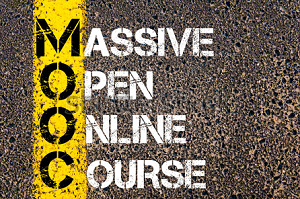
The Peace Corps, a volunteer program run by the United States government, deploys engineers out into the field. Its aim is to work with people in impoverished nations with the aim of finding workable solutions to problems. A returning chemical engineering volunteer took to social media site, Reddit, to deliver his opinion on what he had experienced:
“No amount of money will solve problems. People who set good examples and enable other people to solve their own problems...solve problems. Foreign development is a game and it takes many moves to have an impact. Those that are there for the short game fail. “
Works Cited
"MIT OpenCourseWare." MIT OpenCourseWare.. Web. 15 Feb. 2017.
"Recent BSEE Graduate Looking to Volunteer and Help Others Abroad (EWB, Peace Corps, Etc.) • /r/engineering." Reddit. Web. 14 Feb. 2017.
Scarlet Cronin / Gregory Milne October 13, 2016, Clinton Foundation July 5, 2016, and Donna E. Shalala July 29, 2015. "Powering Haiti with Clean Energy." Clinton Foundation. Web. 14 Feb. 2017.
Automated systems are changing our world daily. New technologies make their way into workplaces annually, changing the way a company operates and changing the face of its workforce. Sometimes, automated software crunches the numbers. But, increasingly, in engineering applications, the changing face is a robot.
Robots are the 24/7 worker. No lunch breaks. No toilet breaks. No sick leave. They do, however, need a unifier, to enable them to work together. They need a network.
Robots networks are required to facilitate their functions; a network architecture that is fast enough and robust enough to deal with the many automated systems connected to it – all working simultaneously.
A 4th generation cellular network will make way for a 5th generation with higher speed bandwidth and newly designed industrial applications. New protocols will be invented so that systems can talk to each other and work in unison. It’s all about the Industrial Internet of Things (IoT) and what it is doing for the automation of processes in business.
The industries most prone to IoT revamping in the short-term are industrial environments and agricultural industries. As new technologies make their way into the industry, regulations and legislation need to be put into place.

Credit: Sensor-Technik Wiedeman GmbH
Sensor-Technik, a German engineering company, specializes in connecting mobile machines to IoT-like networks. They say that “monitoring surroundings” and “situation awareness” will be very important in the coming years, as automated machines continue to be manufactured.
How these networks - that facilitate the aforementioned ideals - will integrate with robotics, is something that robotics manufacturer KUKA is closely monitoring.
Interconnected and automated construction and mining machinery is increasingly being employed in industry. There is no surprise, therefore, that safety at these sites is improving; there are fewer personnel to harm and the opportunity for human error is reduced too.
Rio Tinto’s autonomous mines

Credit: BBC/Click
Rio Tinto, a mining company with mines in Australia and around the world, has two iron ore mines in Western Australia that use some of the latest in automation technologies. Robot drillers, driverless iron ore transporting trains and automated rock breakers are all being employed. The company claims that their 73 automated haul trucks are 15% cheaper to run than manned vehicles, and inevitably more efficient.
The mine is able to function twenty-four hours a day, seven days a week. They are reliant, however, on their control centers, where humans are required.
John McGagh, head of innovation at Rio Tinto told BBC’s Click, commented that 5% of the world’s energy goes into the crushing and grinding of rocks. He went on to explain why their automated systems are invaluable; the efficiency of these systems results in energy cost savings.
There remain, however, many industrial applications where personnel and automated robots work alongside each other. This is indeed gratifying, but can present uniquely dangerous safety situations.
The legislation
The European Union have tried to keep ahead when it comes to robot and human coexistence. EU-members have called for the Legal Affairs Committee to secure industry-wide and EU-wide safety standards for robotics.
The monitoring of how robotics interposes into daily human life is the focus of the new legislation. EU members believe that “guaranteeing a standard level of safety and security” is vital, particularly with the speed at which the robotics industry is evolving.
Rapporteur, Mady Delvaux said:
“A growing number of areas of our daily lives are increasingly affected by robotics. In order to address this reality and to ensure that robots are and will remain in the service of humans, we urgently need to create a robust European legal framework.”
Safety standards for collaborative industrial robots already exist thanks to the EU. The standard is named ISO 10218, which covers: Safety of Industrial Robots, Part 1 and Robot systems and integration, Part 2. In the coming months and years, robotics standards will burgeon and become embedded into law to prevent accidents, but also to ensure that the right steps are taken should they occur.
The EU Committee believes that the ethical standards and liability of accidents involving automated vehicles (including self-driving cars) must be developed directly. The reality is that mobile robots will integrate into everyday human life imminently.
Works Cited
Krüger, Jens. "Sensors – Situation – Safety." MobilTron 2017. Web. 01 Feb. 2017.
"Robots: Legal Affairs Committee Calls for EU-wide Rules." News | European Parliament. Web. 01 Feb. 2017.
Tees44. "RioTinto Automation- BBC Click." YouTube. YouTube, 16 Nov. 2014. Web. 01 Feb. 2017.
Graphene, a carbon compound discovered in 2004, is now known as one the strongest materials in the world. At only one atom think it is also one of the most lightweight.
Impressively, it has further benefits; it conducts electricity and is water-repellent too.
These qualities make it very attractive for product design, but engineers have had trouble converting it from 2D to 3D applications.
The US Army is so impressed with this microscopic sheet of carbon that they have funded MIT research into graphene microchips – they are hoping to vastly expedite their capacity to process information.
The researchers showed what a flow of an electric current would do to one sheet of graphene. They concluded that a flow of electric current can “exceed the speed of slowed-down light” on the sheet and achieve something comparable to a sonic boom - just with light. They’re calling it: the optic boom.
Marin Soljačić, a professor of physics at MIT, explained: "This conversion is made possible because the electronic speed can approach the light speed in graphene, breaking the ‘light barrier’”. Just as breaking the sound barrier generates a shock wave sound, he says.
In the case of graphene, this leads to the emission of a shock wave of light, in two dimensions. If this research goes any further we may see some movement in a light generation technology to compete with LED technology.
The heat transfer and electric conductibility of graphene has shown that graphene could be utilized to transfer heat from a light-emitting diode (LED), which in turn, would increase its efficiency.
Normal carbon fibre will allow light to pass through it, showing its weak spots, whereas graphene appears utterly void of light. The researchers say their breakthroughs could have significant benefits for electronics technologies. The following photograph is from the Global Cycling Network (GCN), which recently completed a report on graphene.

Wait! Why would cyclists care about graphene?
Cyclists - and some engineers - are very particular about their bikes. Patents for products utilizing graphene are starting to pop up all over the world. The promise of a sturdy, waterproof and lightweight frame is exactly the kind of thing cyclists are into.
A company named Dassi, engineered the world’s first graphene bike frame. The graphene is harvested in the labs of a company named Perpetuus. They are carbon technology specialists, who, according to the GCN, produce the most graphene in the world. They produce 400 tonnes per year.
Based on the GCN report, the engineers at Dassi are hoping to build a graphene bike frame that weighs only 350 grams, and is the more durable than carbon fibre frames. The frames they currently produce are not completely graphene-based.

Dassi’s Graphene Bike Frame
Credit: Dassi.com
Graphene could also produce the next generation of clean fuel cells for the future powering of automobiles. Graphene purportedly allows protons to pass through it, which allow hydrogen to become isolated. (This is something scientists had been trying to achieve prior to the discovery of graphene.) The result would be clean fuel cells being burned for clean electricity.
Graphene’s chemical makeup, in its two dimensional form, makes it one of the strongest elements in the world today. But, transferring graphene into a three-dimensional material has been the recent focus of engineers. If graphene can successfully be implemented into three-dimensional objects, it could have far-reaching benefits for engineering industries. Researching engineers at MIT have investigated:
Works Cited
David L. Chandler | MIT News Office. "Researchers Discover New Way to Turn Electricity into Light, Using Graphene." MIT News. 13 June 2016. Web. 24 Jan. 2017.
"One of the Strongest Lightweight Materials Known." YouTube. 06 Jan. 2017. Web. 24 Jan. 2017.
Globalcyclingnetwork. "The Next Carbon Fibre? Why Graphene Could Be The Future Of Bikes." YouTube. YouTube, 22 Jan. 2017. Web. 24 Jan. 2017.
The Syrian War has reached its fifth year with the death of an estimated 400,000 people. It is also responsible for the biggest refugee crisis in documented history. According to the UN Refugee Agency (UNHCR), 4.8 million Syrian refugees have fled to neighboring countries, with another 6.6 million displaced in Syria itself. They also report that “hundreds of thousands” have fled to Europe.
Photojournalists have shown that many Syrian cities are uninhabitable, with basic living and education no longer viable. However, a glimmer of hope does exist for a time when the rebuilding gets underway.

Image Credit: BBC
German military men, proficient in practical, structural engineering skills, have been training Syrian refugees. The hope is that they will return to Syria, once the war is over, to improve conditions and help rebuild their nation.

The program has been running for five months, with a pledge at this stage, to train 120 refugees. To the refugees’ benefit, the skills they are learning can also be used on German soil. Defence Minister Ursula von der Leyen launched the project saying:
“The goal is for these young people to get good, basic training. We don’t know how long it will take until they can return, so they have to be able to make a living while they are here.”
Engineering employment
A sad and bizarre correlation has emerged and begs the question: ‘Has a lack of Middle Eastern employment opportunities for engineering graduates led to a spike in terrorist group membership numbers?’
Researchers believe it has. A 2016 book published through the Princeton University Press, named Engineers of Jihad: The Curious Connection between Violent Extremism and Education, revealed that 800 known ISIS members were, in fact, engineering graduates.
The authors, Diego Gambetta & Stefan Hertog, also wrote: “In fact, of the twenty-five individuals directly involved in the 9/11 attacks, eight were engineers.”
The socioeconomic conditions in these Middle Eastern countries, some of which are war-ravaged, have made it incredibly difficult to find normalcy let alone skilled employment. The result has been a plethora of applications for resettlement in an assortment of countries, including those in Europe and in the United States. With their sought-after skills, refugees hope to forge new lives. Some destinations are more reticent and less welcoming than others and there are many and varied reasons for this.
The Travel Ban
President Donald Trump’s travel ban has thwarted the ambitions of many Middle Eastern engineering students and professionals hopeful of settling in the US. On the 27th January Trump signed an executive order to delay the entry of people from seven Muslim-majority countries: Iraq, Iran, Libya, Somalia, Sudan, Syria and Yemen.
Federal judges have since overturned the executive order, deeming it unconstitutional. Trump’s vow to appeal their decision is being watched closely by many.
The tug-of-war between the federal courts and the presidency has prospective MIT student, Mahmoud Hassan, concerned. Talking to CNN, Hassan, an 18 year old Syrian student from Damascus, says that even though he has a scholarship from the Massachusetts Institute of Technology (MIT), his dream of obtaining an engineering degree from America’s top-tier university is “basically ruined.”
Works Cited
The Independent. Independent Digital News and Media. Web. 10 Feb. 2017.
"Gambetta, D. and Hertog, S.: Engineers of Jihad: The Curious Connection between Violent Extremism and Education. (eBook and Hardcover)." Princeton University. The Trustees of Princeton University. Web. 10 Feb. 2017.
"A Syrian Teen Was Headed to MIT and Then Came the Ban." CNN. Cable News Network. Web. 10 Feb. 2017.
Creating infrastructure on a large scale for a vast country with a growing population has, by necessity, been China’s focus. And they are very good at it. Many nations struggle to keep pace with the needs of their citizens and China is no different. It has, however, made some brave, but perhaps somewhat audacious investments in projects for the future.
One of the world’s biggest photovoltaic solar farms now exists in China. Construction began in 2013 and at completion the plant cost was estimated at US$721 million. It will produce 850MW, and power an estimated 200,000 households.
China also has the biggest wind farm in the world. The Jiuquan Wind Power Base is located in northwest China’s Gansu province. The farm has the ability to produce 10,572 kilowatts of power with a record number of wind turbines at 7000. The plant would be able to, according to the New York Times, “power a small country”.

Jiuquan Wind Power Base / Credit: Xinhua | English.news.cn.
The turbines are, however, standing idle. There is simply not enough demand to turn a profit. The demand from coal power plants remains strong and a cheaper source of energy.
There are additional project glitches, as with all engineering endeavours; the location of the turbines has made it difficult for engineers to erect transmission lines which reach populated cities.
China’s government is determined to have the country accept and use renewables – their emissions are very high and so they are actively addressing the issue. To this end China has begun a crackdown on coal power plants, ensuring that they operate under strict standards and future growth in the industry has been curtailed.
The country has pledged that they will spend $361 billion in renewable energies by 2020. Further large-scale solar plants are planned and investment into wind will also be sizable. According to Reuters, the cost of photovoltaic solar panels has dropped by 40% since 2010.
Over-engineering, over-investment
China has a long history of over-investment in engineering projects and real estate speculation. The country’s engineers overestimate the demand of several projects and then the investors over-invest in a project that has little public interest.
The New South China Mall - known as the biggest mall in the world, for example, was once branded a ‘dead mall’ due to the initial disinterest from the public. Twelve years after its construction it is now attracting customers.
Similarly and more concerning, in recent years there have been entire cities erected that have never seen inhabitants. The media refers to them as ‘ghost cities’.
Fortune published a story in 2014 that pointed out that 40% of Chinese investment projects were “either not finished on time or not completed at all.”

Credit: Wade Shepard / The New South China Mall
With this in mind the question is whether or not China’s renewable energy plans will achieve their objectives and reach their potential.
The Jiuquan Wind Power Base is only running at 40% capacity at the moment, but it is worth reflecting that China’s renewable energy plans will create thousands of new engineering jobs. China’s National Energy Administration said it would create 13 million jobs.
The New York Times reports that China is adding a new wind turbine to the country’s energy production every hour.
The Chinese government is certain that investment into renewables is going to be a success in the long-term. Lowering emissions from fossil fuel industries is in their best interest as they have been suffering from record levels of air pollution in their metropolitan areas; most notably in Beijing.
The rest of the world will be keenly watching how China’s investment in renewables plays out. Despite some nations achieving remarkable successes in these new technologies, most are more cautious about moving away from fossil fuels.
Works Cited
"China to Plow $361 Billion into Renewable Fuel by 2020." Reuters. Thomson Reuters, 05 Jan. 2017. Web. 02 Feb. 2017.
"China's Deserted 'ghost Cities' Appeal to New Residents." CBCnews. CBC/Radio Canada, 10 Nov. 2015. Web. 03 Feb. 2017.
"In Pics: Jiuquan Wind Power Base in China's Gansu." In Pics: Jiuquan Wind Power Base in China's Gansu - Xinhua | English.news.cn. Web. 02 Feb. 2017.
A primary and emergency spillway at Lake Oroville, California, have eroded to the point where repair is immediately required. Water levels have risen to historic levels resulting in worried authorities evacuating more than 190,000 people from the valleys below; they fear that the dam won’t hold.

The reservoir is California’s second-largest provider of water. The dam’s capacity is 4.363537 km3, which equates to 1.75 million Olympic swimming pools.
The dam recently reached capacity due to winter rains and snow melt. Worryingly, the main spillway has eroded - chunks of cement have recently given way. The deluge of new water is spilling into a 200-foot-long, 30-foot-deep hole, creating even more erosion.
Engineers now have to utilize the dam’s emergency spillway, unused since its construction in 1968. The concern is the erosion on this spillway too; it has not been adequately reinforced.
The dam safety engineers are anxious about keeping water away from the emergency spillway. Once water spills over into it the erosion there means that they have little control. This was what motivated them to hand down the evacuation order.
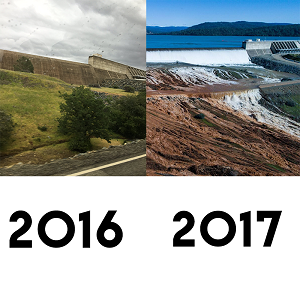
Auxiliary Spillway at Lake Oroville
Credit: Mike Anderson/ Twitter: @abros805
If the emergency spillway does indeed founder, the dam will begin draining. The officials are now concerned that the situation could lead to catastrophic failure.
To counteract further erosion on the main spillway, engineers are dropping bags of rocks into the hole. This will help mitigate the damage from the energy the dam is releasing and will slow the erosion.
The full repair of the damage to the spillways will cost, it is estimated by officials, between $100 and $200 million. The engineers believe they have the situation under control, but they describe it as a “dynamic”. Residents will not be allowed back into the county until they are sure it is safe.
The fact that more rain is forecast will be a setback, water levels will rise further and the emergency slipway could dump large amounts of water into the Feather River, which runs through downtown Oroville.

What went wrong?
The state of California has been sternly criticized for wilful ignorance. There is a claim that, at least a decade ago, documents were filed, warning the government that they could be facing the probable catastrophe they are facing today.
According to Mercury News, state officials had warned the federal government that the emergency slipway was eroding. The state officials, purportedly, continued to warn them for a decade. Head of the Californian Department of Water Resources, Mark Cowin, said he was unaware of any such documents.
Nonetheless, engineers have been clear in saying that they are not sure what caused the erosion on both the main and emergency spillways.
According to the LA Times, the spillway is checked annually and was repaired in 2013. Water Resources engineer, Kevin Dossey, told them: “We made repairs and everything checked out. Obviously, something has happened that we didn’t expect.”
Works Cited
Los Angeles Times. Los Angeles Times. Web. 13 Feb. 2017.
Rogers, Paul. "Oroville Dam: Feds and State Officials Ignored Warnings 12 Years Ago." The Mercury News. The Mercury News, 13 Feb. 2017. Web. 13 Feb. 2017.
Here’s a question you’ve (likely) never asked anyone before: Where does Bermuda get its drinking water from?
A rudimentary question, at best. However, a closer investigation into the topic, a legacy is revealed. A legacy of water engineering and management that the world could learn from.
Bermuda is essentially a series of small islands that are joined via bridges to make up a large land mass. The islands were built upon porous limestone mountain ranges produced by a now-extinct volcano.
Being so far out in the North Atlantic Ocean there is simply no fresh water in Bermuda. Even the lakes and water wells are brackish. Therein lies a clue: they are surrounded by the abundant ocean. Removing salt from salt water using desalination plants is perhaps the answer today, but how did the human beings who settled in Bermuda 400 years ago access drinking water? They needed a practical solution.
The short answer to the question is rainwater and roofing.
Bermuda’s roofs are engineered in such a way that they harvest rainwater. By law, every Bermudan house and building must employ the same style. Rain water was, and still is, the only source of truly fresh drinking water.
These roofs are civil engineering masterpieces, dating back to 1609.

How do they work?
The original settlers took the super absorbent, porous limestone Bermuda was built on, crafted it into roof tiles, and used these to construct stepped roofs. The roofs capture, and slow down, any rain droplets that hit them. This harvested rainwater is then collected into gutters which then transfer the water into storage tanks under the houses.
Traditionally the roofs were painted with what was known as a ‘lime-wash’, after construction was completed. The lime-wash had antibacterial properties. Currently, however, the roofs are still painted white because this reflects ultra-violet light from the sun, which also helps to purify the water.
Bermudans capture an average of 350,000 liters of water per house, per year. This is a startling achievement, but still Bermuda could not depend on this water catchment alone.
In response six desalination plants have been constructed; they produce 13,500 cubic meters of water per day so help address other water requirements that the island has.
Vital water infrastructure
Bermudan scientist, Tarik Smith, knows - all too well - how important water management is. He is now sharing this expertise with international research and development.
He delivered a speech at the Division of Arts and Science Corange’s public forum, named: “Water Engineering: Facing the Challenges of Water Management”.
In an interview with the Royal Gazette, he stressed the importance of research into water management and mentioned the benefits of recycling water – already used in may countries around the world. He also revealed a justified pride in the rainwater harvesting system in Bermuda. He said:
“Bermuda is very conscious in terms of water consumption. Rainwater harvesting systems are a model for many countries. I think we don’t realise how advanced we are with respect to that. Many places have a lot to learn from Bermuda,”
Are desalination plants the future?
In a book, published in 2015, named Concentrating Solar Power and Desalination Plants: Engineering and Economics of Coupling Multi-Effect Distillation and Solar Plants, it is revealed that water scarcity will only intensify. The authors detail that by 2030 47% of the world’s population “will be living in areas of high water stress.” The other 67% will not have adequate sanitation.

Desalination plants are becoming one of the only solutions to those grim statistics. Taking salt out of the seawater through reverse osmosis is the most used method around the world.
Countries in the Middle East are already utilizing desalination plants on a mass-scale due to their scarcity of water. In fact 70% of the world’s desalination plants are housed in the Middle East.
Credit: BetterWorldSolutions.eu / Desalination plant, Ras Alkhair, Saudi Arabia,
To see how a desalination plant works watch this video from Veolia Middle East. This company operates the Sur Desalination Plant in the Sharqiyah region:
There are unfortunately drawbacks with the use of desalination plants. Fossil fuels power their operations and this of course produces pollution. Moreover, the water from the plants has been called into question due to its lack of magnesium and other minerals normally found in fresh water.
Another concern is the waste. Concentrated salt is pumped back into the ocean, but is also mixed with the chemicals that facilitated the initial desalination process.
Despite the negatives and with engineers dedicated to the problem, these novel approaches to water management can only improve and they bode well for a future of depleting water resources.
Works Cited
Low, Harry. "Why Houses in Bermuda Have White Stepped Roofs." BBC News. BBC, 23 Dec. 2016. Web. 07 Feb. 2017.
PBSNewsHour. "Is Desalination the Future of Drought Relief in California?" YouTube. YouTube, 31 Oct. 2015. Web. 07 Feb. 2017.
"Water Management: A Worldwide Challenge | The Royal Gazette:Bermuda News." The Royal Gazette. 25 Jan. 2017. Web. 07 Feb. 2017.
Bermudabea. "Bermuda's Water Catchment." YouTube. YouTube, 06 July 2010. Web. 07 Feb. 2017.
A solar storm has been brewing in Australia. The country’s homeowners and business owners have lent themselves to renewable energy technologies. More specifically, they are investing in solar photovoltaic energy generation technologies.
Energy Minister, Josh Frydenberg, speaking on Q&A on March 22, 2106, stated that, “Nearly 15% of Australian households have solar panels on their roofs. That’s the highest number of solar panels on people’s roofs per capita anywhere in the world.”
By 2015, Australia became the world leader in household solar panel installations. They soon became a “testing field” for 27 different battery storage suppliers who were looking to store that generated energy. According to The Age, Australia began installing PV and wind energy sources at “20 times the annual worldwide rate” in 2016.
 Credit: TheRegister.co.uk
Credit: TheRegister.co.uk
As battery storage systems have been refined and engineered for efficiency, Australia has seen an upturn in residential battery systems powered via photovoltaic cells. Australia were so progressive in their adoption of home-based solar PV systems that Elon Musk’s Tesla set up shop and started running housing development pilot projects with Tesla’s own lithium-ion battery unit, The PowerWall.
The only issue with the quick uptake of solar PV solutions in Australia, was that energy storage batteries and their installation standards were being left behind. There was little to no regulation of the industry.
The upcoming standards
Standards Australia has laid the groundwork for the future standards of energy storage in their new report: Roadmap for Energy Storage Standards. Dr Bronwyn Evans, Chief Executor Officer of Standards Australia writes:
“In embarking on this uncharted journey of technology, it is critical that those inventors at the forefront of innovation can do so unhampered, and suppliers can get these products to market as quickly as possible. On the other hand, it is imperative that good technologies such as storage systems are safe, reliable and efficient.”
Standards Australia held industry forums and consultations with Standards’ stakeholders. The forums revealed that a technology that requires immediate standards amendments are lithium-ion battery storage applications. They were marked as ‘high priority’ by the forum.
The standard for the installation and safety requirements of battery storage systems (AS/NZS 5139) would need to be amended and aligned with international standards, and implemented for larger storage systems, not just home-based ones.
The big concern

Standards Australia is focusing on the home system for the immediate future. And it seems that they have ruffled some feathers with their report. The new proposed guidelines are taking into consideration the dangers surrounding lithium-ion batteries. The main concern is that lithium-ion energy storage systems are prone to catching fire.
As a result, Standards Australia’s new guidelines may lead to the restriction of home battery storage systems being physically installed inside homes. Standards Australia are suggesting PV battery storage systems be installed outside of the house in their own ‘kiosk’ or ‘bunker’.
The new guidelines would dictate that consumers of battery storage systems would have to have an external covering in which to house the system. Presumably it would have to be fireproof as well.
Prime Minister of Australia, Malcolm Turnbull, a proponent of having energy battery storage systems inside houses (since he has one himself), said:
“We have got so little energy storage in Australia. There are only three significant pumped hydro storage facilities in Australia and yet we are introducing all of this renewable energy. What do you need if you have a variable source of energy? You need storage.”
Are lithium-ion storage units really that dangerous?
In April 2016, an image of an exploded lithium-ion battery storage unit was circulated on Australian social media channels. The battery belonged to a company named Growatt, who were using Chinese battery technology in Australia. The consumer had the battery placed in his garage.
Following that, the Clean Energy Council of Australia began to put emphasis on ‘integrity and safety’ of battery storage units.

The CEO of the Australian Solar Council, John Grimes, was a strong supporter of tightening up the battery storage standards in 2016. He said:
“The fact that there is no standard means there is the opportunity for shysters and carpetbaggers to go out and put something in the marketplace.”
Grimes has yet to comment on Standards Australia’s draft report. He did, however, in an interview with RenewEconomy, say that evidence must be provided to prove that in-house installations are dangerous. Standards Australia will allow for nine weeks of public comment on the installation and safety issues before they move forward - they are expected to see a lot of protest.
However, lithium-ion battery storage units have been proven to be efficient and safe. Badly manufactured units, like those aforementioned ones, will not survive the safety installation benchmarks and will eventually be excluded from the market. This should strengthen the case for in-house storage unit installations.
Works Cited
Council, Climate. "The Critical Decade: Australia's Future - Solar Energy." Climate Council. Web. 17 Feb. 2017.
"Standards Australia." Standards Australia. Web. 17 Feb. 2017.
"Standards Australia Delays Storage Guidelines after Protests." Renew Economy. 15 Feb. 2017. Web. 17 Feb. 2017.
Altering leave days, with both men and women employees in mind, may help companies retain women in their jobs, particularly those with positions in STEM (Science, Technology, Engineering and Mathematics).
PAE is an American engineering firm that designs “high-performing environments” that are designed with a focus on nature, but especially on water and energy conservation.

PAE’s Director of Employee Experience, Shiloh Butterworth, says that they are testing a method to keep their engineering women in the company: “We are proud to offer an equitable leave benefit to help sustain our employees at home and work.”
Presently, under law in the US, mothers-to-be get 12 weeks of unpaid leave (although there may be some variation between states). Whereas PAE’s new paid leave policy is believed to be one of the most unique in the engineering industry, in the United States. Their “Wellness Leave” system offers expectant mothers and fathers six weeks leave at full pay. This offer is on top of the leave benefits already available to staff.
But is this remarkable? According to research conducted by the Pew Research Center, the U.S. is the only one, out of 41 nationstudied that did not mandate paid paternal leave. Estonia offers a staggering 87 weeks of paid leave for new parents.
The thinking behind PAE’s Leave policy is interesting. Butterworth believes that if men took more paternal leave, it would “level the playing field” for the advancement of women’s engineering careers.
The program also allows leave for any PAE employee adopting a child or “dealing with a serious health condition of their own or a loved one.”
Retaining women in engineering roles has historically been difficult for companies due to several factors. PAE is hoping their equitable leave policies will lead to a “culture shift” in the industry, implementing an ideology that enforces equal rights between males and females in the industry.
Where are the women?

In 2016, Engineers Australia released a report that indicated that “half of female graduates in engineering do not enter the workforce”. The report revealed that only 13% of engineers in Australia were female.
The report also stated that only 1% of Australian women past the age of 50 are currently working in engineering industries.
Dorothy Thompson, the chief executive of Drax - a company that generates 7-8% of the UK’s electricity - admits that attracting women to the energy sector has been difficult. She told the Guardian that Drax set up an apprenticeship program and received two women applications compared to a staggering 76 from men.
Thompson said:
“We would like to have more female apprentices, more female engineers. We believe in diversity. But it is challenging,” she said. “Part of it is in education but part of it is perception. We as an industry need to be more proactive in explaining how interesting an opportunity we are.”
A concerted effort needs to be made to overcome the persistently low numbers of women in STEM industries. Roma Agrawal, a structural engineer, commented wisely in an interview with Making It Magazine, “Scientists and engineers work for people, if our teams do not reflect society, then how can we come up with the best solutions?”
Works Cited
Leadership, Center For Parental Leave. "A Bold Move to Retain Women in STEM: PAE Announces Gender-Neutral Paid Leave Policy." PRLog. Web. 31 Jan. 2017.
Livingston, Gretchen. "Among 41 Nations, U.S. Is the Outlier When It Comes to Paid Parental Leave." Pew Research Center. 26 Sept. 2016. Web. 31 Jan. 2017.
"Technical Societies." Home | Engineers Australia. Web. 31 Jan. 2017.
Dear Colleagues
 You will all sigh knowingly when you think of engineering meetings. Often a huge waste of time where the boss holds forth and gives everyone a lecture and participation is rather fractured. Personally I try and avoid them as I have had such bad experiences over the years with them often being unproductive. But they definitely have a vital role to play especially in today’s email ridden world where we sometimes lose the connections and contributions from our peers.
You will all sigh knowingly when you think of engineering meetings. Often a huge waste of time where the boss holds forth and gives everyone a lecture and participation is rather fractured. Personally I try and avoid them as I have had such bad experiences over the years with them often being unproductive. But they definitely have a vital role to play especially in today’s email ridden world where we sometimes lose the connections and contributions from our peers.
Well – I believe there are two issues with meetings – obviously make ‘em productive and useful – most definitely focus on this – otherwise don’t hold one. But also ensure that everyone feels that they have made a happy productive contribution to the meeting and it wasn’t just a one way dissertation from a few participants - but a high quality experience for everyone with a brilliantly useful outcome.
A few suggestions for your next meeting:
- Ensure the meeting has a real purpose in collaborating as a team and everyone present should be there – i.e. has a role to play. And that there will be a real outcome from the meeting – not some mumbo jumbo discussion fest which leaves everyone confused and determined to avoid in future.
- Set up the ground rules at the beginning of the meeting such as avoiding technology distractions, making sure everyone is keen to participate and identifying who will be actively managing the session and helps everyone contribute.
- Prepare thoroughly beforehand to ensure the meeting isn’t an after thought but something you can create value from by asking the right questions and ending up with everyone contributing to a valuable experience. It is not simply yet another meeting rushed through on your way to another meeting.
- Demonstrate empathy and care for your fellow participants. Listen carefully and constructively to others. Don’t bulldoze your way through with some interminable lecture which drives everyone crazy.
- Ensure you have sufficient time for all topics – adjust your agenda for fewer agenda items and more time per item. And ensure the meeting doesn’t go on forever. Ensure that everyone participates and makes a contribution to the topics.
- Very importantly – when you ask for a contribution – wait quietly for a response. Don’t barrel onto to the next agenda item but show that you genuinely were wanting a contribution.
Hopefully these suggestions will make a difference to your next meeting……
Thanks to Paul Axtell from Harvard Business Review for an interesting article on: How to Design Meetings Your Team Will Want to Attend.
This is probably not germane to this blog item but it goes to the heart of who we are as engineers – a comment from Richard Lamm: All we know about the new economic world tells us that nations which train engineers will prevail over those which train lawyers. No nation has ever sued its way to greatness.
Yours in engineering learning
Steve
Dear Colleagues
 As a young lad or lass - can you remember your first project? I clearly remember my first one - building a crystal radio. Laboriously purchasing all the components (which admittedly weren’t many – a few capacitors/coils/resistors/ headset and a torturously long piece of wire for the antenna). It was simply amazing when everything clicked into place after some wrestling with the soldering iron and a few recalcitrant wires and I had strung up the antenna over the roof of our home. And I could then tune into a radio station with no power supply at all – everything powered by the radio signal – simply incredible. Admittedly after a drawn out fiddling first with the components and variable capacitor – sometimes referred to as tuning.
As a young lad or lass - can you remember your first project? I clearly remember my first one - building a crystal radio. Laboriously purchasing all the components (which admittedly weren’t many – a few capacitors/coils/resistors/ headset and a torturously long piece of wire for the antenna). It was simply amazing when everything clicked into place after some wrestling with the soldering iron and a few recalcitrant wires and I had strung up the antenna over the roof of our home. And I could then tune into a radio station with no power supply at all – everything powered by the radio signal – simply incredible. Admittedly after a drawn out fiddling first with the components and variable capacitor – sometimes referred to as tuning.
There was however an irritating “mains hum” on my audio due to the 50Hz interference from the power to the home and this had to be dealt with by painstakingly improving the earthing connection after getting mixed advice from various other techs. My first taste of troubleshooting and optimising the design while trying to understand the main issues.
Optimising the Design
I then went further and built a radio powered by a tiny solar cell (from RadioShack) – this all 45 years ago. I found it all quite amazing – a lifeless bunch of components creating a living machine which was useful. And powered by the sun with nary in a battery in sight. The first glimpses of sustainability in those early designs. And the challenges of reliability of power when the sun disappeared behind a cloud.
Perfection is ever so elusive
You can surely also remember the troubleshooting and optimising to get to the supposedly perfect solution. Well – it is never perfect – one can spend aeons on adapting the design and improving on it. And troubleshooting is a key element in the process.
Engineering your way to success
This process is the reason why we are all in engineering. The obstacles are quite huge and the sense of the unknown is always lurking around the edges. Most other people look at us blankly when we describe our successes and our wrangling with the problems in the design. But the satisfaction is huge and boundaries are always retreating as we understand our designs and deal with the unexpected problems.
We use our positive powers and technical knowledge to make something out of nothing. To build something useful for the community. We always resist the “almost finished but let’s ship it” syndrome which the marketing department love.
As Robert A.Heinlein remarked so wisely: One man’s “magic” is another man’s engineering. Supernatural is a null word.
Thanks to Cees Links of the IEEE for an inspirational article about WiFi.
Yours in engineering learning
Steve
Pardon Makura is an instrumentation and control technician at Eskom’s Medupi Power Station in Lephalale, South Africa. He was awarded the City & Guilds of London Institute’s Gold Medal for Excellency in Electronics in 2002, and earned the Licentiateship (LCGI) Diploma in Electronics, in 2006.

And now he is an Engineering Institute of Technology (EIT) alumnus. He completed one of our Certificate Courses in 2012 and at the end of 2016 he graduated from our Advanced Diploma in Electrical & Instrumentation Engineering for Mining.
Makura works in electrical instrumentation at Medupi Power Station, but was eager to talk about general developments in the power generation industry in South Africa, “Lately, there has been a lot of deliberation on plans to generate power from nuclear energy.”
Eskom, South Africa’s electricity utility, intends to produce 9.6GW of nuclear energy in the near future. The utility issued a request for proposals in December 2016; opening it up to foreign specialists proficient in nuclear energy and interested in constructing a new nuclear power station in the country.
Nuclear power is controversial. It is a particularly sensitive topic with the Fukushima Daiichi nuclear reactor accident still fresh in everyone’s minds and that anxiety hasn’t been eased with countries like Germany opting to move away from nuclear power completely.
Makura says that he has his reservations regarding the safety aspects when it comes to building new nuclear facilities in South Africa. He wonders what assurances the government can give to South Africans if they do, indeed, proceed with their plans. He notes the recent nuclear plant disasters as a leading cause for concern - they could happen to any facility.
Despite the general disquiet South African Nuclear Energy Corporation (Nesca) chairman Kelvin Kemm, however, is certain the country can make a success of a new nuclear power station project. He spoke to Fin24, saying:
“Over forty years ago, in collaboration with foreign partners, South Africa embarked on the construction of Koeberg nuclear power station. That decision turned out to be a great success. This time around we can do even better.”

Image credit: Pixabay.com
The maintenance of nuclear energy power stations is the key to their efficient and safe operation. Pardon Makura believes e-Learning could be the answer to the education and training needs that are likely to emerge with these proposed projects. The online platform of learning allows engineers and technicians to up-skill without giving up work, and means that the best courses and college can be selected. He says:
“I think e-Learning is where the education system is headed worldwide in this era of technology and it’s a matter of time before it becomes the default system particularly in tertiary and professional education.”
Makura, of course, lives in South Africa, where tertiary education fee protests may soon be reignited as the academic year begins. The likelihood of this has been increased with the South African Further Education and Training Student Association (Safetsa) saying that they will be standing in solidarity with the Fees Must Fall movement. They aim to shut down all 50 Technical and Vocational Education and Training (TVET) college campuses in the country, starting this January.
The protests are also related to the delays in results and certificates; according to South Africa’s Independent Online News Source, some students have not received their results or certificates since 2012.
This hiatus is damaging to the economy, as essential as they are, South Africa is failing to produce artisans and tradesmen and women proficient in specialised technical and vocational skills. The finger is being pointed at the Department of Higher Education.
Makura maintains that the answer could be the expansion of e-Learning institutions:
“The government needs to invest human and financial resources into e-Learning because it is not something that is just on paper but a reality! It worked quite well for me because it enabled me to further my education whilst I continued with my work requirements, so it was a ‘win-win’ situation. The major challenge was to make sure that I had good internet access on demand’.
Congratulations Pardon, we at the EIT wish you every success and hope to see you back when you further your education online.
Works Cited
"Eskom Fires Starting Gun on Nuclear Plan." Fin24. 20 Dec. 2016. Web. 19 Jan. 2017.
"TVET Students Threaten to Shutdown Colleges." IOL. 19 Jan. 2017. Web. 19 Jan. 2017.
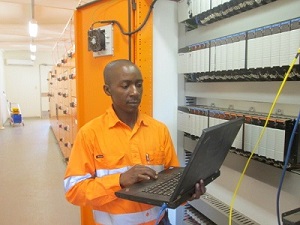
Endeavour Mining’s Karma mine in Burkina Faso, West Africa, is an open-pit mine that produces an estimated 190,000 ounces of gold annually. The mine started construction operations in April 2016, and is expected to run over a 10-year mine life.
The Former CEO of Endeavour, Neil Woodyer, before the operation began, said:
“Once in production, it will become our flagship low-cost mine and will rank amongst West Africa’s top tier cash generating mines.”
Simbarashe Mburuma has worked in the electrical and instrumentation field in mining for the past 10 years. Working in and around Africa, he has taken his expertise to Zambia, the Democratic Republic of Congo, Botswana, South Africa and Ivory Coast.
Mburuma currently works for the Endeavour Mining Construction Team in Burkina Faso, working as an Electrical & Instrumentation supervisor. His day to day tasks consist of installing Electrical and Instrumentation systems in process plants and working with the automation team and he will continue to do so until the project concludes.
This is one of the reasons that contributed to his decision to embark on the Advanced Diploma of Industrial Automation, offered by the Engineering Institute of Technology (EIT).
But it was his opinion of automation generally which ultimately motivated him to register on the course: “Industrial Automation is going to change the shape and control system architecture in most industries, be it mining or manufacturing.”

There is no doubt that automating the mining industry will ensure that mines are less labor intensive, safer and increasingly efficient. Mburuma goes on to say that mining process control is moving so fast that a practitioner has to “keep up with the current trends.”
However, he did clarify that as a staff member of a mine which is constantly striving to achieve its goals, the efficiency and work ethic of the individual is also important.
In this regard, the course introduced Mburuma to a very useful technique during his course; he learned how to implement the Pomodoro Time Management technique; a benefit in both his studies and work.
The Pomodoro Technique is a time-utilization technique that involves studying or working in short, but effective bursts of twenty five minutes each. It is followed by a short break, and then a return to work. Mburuma used it to balance his time between his job and his studies.
He found other aspects of the course valuable too, about which he had this to say, “The program is so rich with educational material used in a day to day environment,” Specifically he mentioned applying the following to his daily operations, “Control loops tunning , electric motor protection and maintenance, industrial communications, PLCs and SCADA technologies - only to name a few.”
Mburuma is now looking forward to pursuing EIT’s Master of Industrial Automation. He commented that the flexibility of the live, online learning approach and the rich course material has enticed him to keep going, “I am empowered by this advanced diploma, I am not stopping here,” he said.
All of us at EIT congratulate Simbarashe on gaining this qualification and we look forward to his return.
Works Cited
"Endeavour Mining Starts Construction of Its Houndé Project, Its next Low-cost Gold Mine." Endeavour Mining Corporation RSS. Web. 30 Jan. 2017.
Image credit: Amazon.com
Dear Colleagues,
The current evidence clearly relates better maths results for students to a country’s higher GDP and incomes. Thus a key question relates to the best way to teach maths (or ‘math’ as our North American cousins refer to it). Further to this, a vital question is how to relate success in maths to success in your engineering job. Especially from a creative and innovation point of view. As we all know, creativity is highly prized in the world today (whether it be Bruce Springsteen, the Beatles, Bill Gates or Steve Jobs).
Mathematics is the language of engineering and science. The better skill one has of a language, the better one is able to express one’s thoughts and understand those of others.
Maths Robots
However, it all good and well to turn out highly technically proficient maths robots from school and college but if you cannot solve problems or be innovative and creative you are not going to go far in your engineering job. For example, problem solving a tricky installation problem for your control system or designing the next programmable logic controller, iPhone or Google search engine.
The world schooling system is now driven to produce high quality maths graduates; but sadly this is not the only ingredient required to make them successful as an electrician, technician or electrical engineer.
Achieving outstanding results in your maths examinations at school does not translate into becoming a successful engineering entrepreneur where creativity and innovation are the keys to success. Importantly, in life and business, the single perfect answer prompted by maths is generally not the same as the questions posed in life and business. It is a much more ambiguous world with many potential answers.
New Technology is the Key to Success in Maths
A third of pupils tested in Shanghai (one of the top locations for the maths tables) where classical maths learning techniques such as drill and memorisation of formulae are key, show that they generally manage to successfully work with innovative, ambiguous and difficult problems (compared to a tiny 2% in North America and Europe).
But I honestly believe new technology renders much of the old rote learning of maths redundant. There is no doubt that it is important to learn how to do long hand division by hand but then to use a calculator to execute most of the work thereafter. Old fashioned methods such as long hand division are useful to understand but should not be the focus.
An intuitive feeling of the integrity of the results from a software program or calculator are critical; but one should then let the calculator do the mind numbingly grind work of a statistical calculation or least squares fitting of a graph.
It is also important to remember the key formulae but then to be able to access more complex variations on your tablet or calculator. It is also important to think logically and to be meticulous about assessment of a particular problem. After all, there is a massive difference between a solution to a power problem indicating that you need to size your generator to provide 300kW and not 420kW of power with 20% spare capacity. Simply being able to use a tablet without a deep understanding of how the underlying maths works is a recipe for a superficial approach and many mistakes.
Visualization is Also Fabulous
One of the most marvellous things of computing technology is the ability to allow one to visualize the result of a mathematical equation. One only needs to look at Maxwell’s equations which are extremely clever and link the world of electricity to electric and magnetic fields and then to see them actually displayed in graphical format which is so much easier to understand. This level of graphics and visualization was difficult to achieve a few decades ago and would help the learning experience.
A Faulty Premise
I thus do think though that the current debate between rote learning and use of calculators or tablets is missing something vital - most of these approaches to reform maths education are doomed to fail whatever way you go.
Students do need to be proficient in applying maths to real world (engineering) problems; be able to perform problem solving with finesse and to be creative and innovative. This is simply not happening in our education system.
Perhaps, the reason for the drive to reform maths education is that the people who are making decisions have absolutely no understanding of engineering or the industrial world as they are lawyers, accountants or in business. I would doubt the current president of the US could even perform a simple calculus exercise let alone understand the application of maths to the engineering world. Hence, if there were a few more mathematically literate people who have worked as tradesmen, technicians or engineers making decisions in the political world, we would have far more sensible decisions being made about more applied maths education.
Most Engineering Professionals do not need Advanced Maths to be successful
We undoubtedly need maths geeks – who drill down in exquisite detail into maths and spend all their entire careers researching exotic themes in maths. Similarly for those of us who are in dedicated R &D doing some exotic design of a spectrum analyser needing to make some tweaks to a Fast Fourier algorithm to apply it to a new computer processor.
However, it is questionable whether most of us in the engineering world need two or three intensive years of mathematics at college. Learning about exotic complex integrals or doing advanced calculus has limited value for most engineering professionals – whether you are an engineer or electrician. It would be better to use this time to teach the application of maths to problem solving and innovation in engineering.
A Challenge with our High School Teachers
One other problem with our teachers (even with the great ones) is that while they are probably outstanding (and indeed, passionate) at maths teaching, they have great difficulty in putting it all into a real world context. In other words, how you can apply maths to an engineering situation.
OK – I do understand that our high school (and indeed, college) teachers are unlikely to be familiar about the engineering world but it would be worthwhile them gaining some appreciation of the technology world and thus to change the requirements of the maths syllabus to be focussed on applications, problem solving, creativity and innovation particularly in the engineering world.
Thanks to The Economist (and especially the comments) for an interesting discussion on this vexed topic.
Most importantly, as Bill Beattie points out: The aim of education should be to teach us rather how to think, than what to think - rather to improve our minds, so as to enable us to think for ourselves, than to load the memory with thoughts of other men.
Yours in engineering learning,
Steve
EIT will be exhibiting at Career Indaba, South Africa’s premier further education and career guidance exhibition. The event attracts approximately 60,000 visitors annually and will feature over 60 local and international exhibitors.
If you have been considering an EIT program or have questions about our course options, who not come and speak to a representative? It’s free to attend!
You can visit us at stand 1A on 5th and 6th March 2017, Sandton Convention Centre, Johannesburg
You can learn more about Career Indaba and get a visitor pass here: http://www.careerindaba.co.za/

Michael James Ingham is a Mechanical Inspector for the QA Team on the Ichthys LNG Downstream Project in Darwin, Australia. He recently graduated from the Engineering Institute of Technology, obtaining his qualification in the Diploma of Leadership and Management.
In 1995, when Michael Ingham finished school he started his apprenticeship in Engineering Fabrication. “I spent a lot of time fabricating and welding in a workshop environment, using radial drills, lathes and milling machines. I also conducted site maintenance on the four bulk carrier ships that run from Gladstone to Weipa in Queensland, Australia,” he remembers.
Michael soon started fulfilling many roles, working in construction and maintenance for various companies as a tradesman, a Supervisor and even a Superintendent. Using multi-million-dollar equipment, he would perform dragline shutdowns on the coal mines ; repairing, overhauling and maintaining the coal mines. He also aided the construction of oil refineries for BP and Caltex. He has worked on Nickel mines and LNG plants - upstream and downstream - throughout Australia, too.
Ingham is employed on a ‘Fly in Fly Out’ basis - thus, expanding his resume in terms of training and education would have proven to be difficult because of his working schedule. But then, he found the Engineering Institute of Technology. With full-time work obligations and family obligations, Michael needed an alternative to brick and mortar universities/training institutions. EIT’s interactive, online training was a perfect option for him.
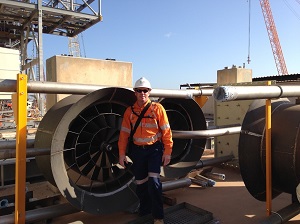
“As I have been doing FIFO for many years I wanted use my time away from family wisely so it was quite easy to do a little studying each night after work to meet the minimum requirements to complete the course. A little studying each night is all it took to get my studies done and assignments completed without affecting my work,” Ingham said.
The Diploma of Leadership and Management wasn’t Ingham’s first online qualification. He completed his Advanced Diploma of Mechanical Engineering through EIT too - he attributed his success in his current job to graduating through EIT. “This style of training really works well for me,” he admitted.
He wants to go a step further and apply for the Bachelor of Science in Mechanical Engineering next. After that, he would like to earn his Master’s degree - which is also available through the Engineering Institute of Technology.
And, on the prospect of further work, Ingham said: “I would like to gain employment after this project, inspect equipment on a new or operating plant, preferably in Brisbane or somewhere in Australia. I am also keen on working abroad,” Ingham told us.
The pursuit of success in engineering industry is a daunting undertaking for some. Ingham says that education is vital. “I have learned that education can do so much for an individual in the Engineering profession. One person can never cover every aspect of Engineering. I have been able to learn a lot by choosing courses that are right for me and giving it a go.”
The President of the United States, Donald Trump, has signed an executive order which stipulates that a wall along the US-Mexico border is to be constructed. The initial promise was that it would be 50-foot high and 2,000 miles long. The President is determined that a wall will be built, and that Mexico will pay for it. Needless to say, it has left civil engineers wide-eyed.
As envisaged the wall will span four states: California, Arizona, New Mexico and Texas.
Trump’s concept of the ideal fortification has already begun to crumble. It cannot be one long, sprawling wall. In his first interview as President-elect, Trump spoke to CBS News show, 60 Minutes, admitting that some fencing might have to be erected as, in retrospect, one long wall might not be practical.
This is contradicts his initial stance on the wall, where he said: “A wall is better than fencing, and it’s much more powerful. It’s more secure. It’s taller.”

Credit: Estudio 3.14/ Agustin Avalos
A design firm in Mexico named Estudio 3.14 rendered an image of what a fully constructed wall would look like upon completion. The architects have titled the design renders: Prison Wall.
Building the Wall
With Trump winning the election civil engineers have been scratching their collective heads in contemplation of the wall’s build. If he wants the best result possible, experts say, he should use concrete masonry units (cinder or breeze blocks). Reinforcement bars to strengthen the wall may be necessary too.
The rumor is that, in total, it would result in a $25 billion bill, with the intensive labour required factored in. Although statistics from Business Insider, Senate Majority Leader Mitch McConnell has suggested that the wall would cost between $12 billion to $15 billion.
Trump might need to resort to a cheaper option; building the wall using inexpensive concrete blocks - 339 million cubic feet of it.
If fencing is indeed included in the construction it will reduce the costs, but what materials would work? It cannot be made out of steel wire mesh as this can be cut through by a range of tools including wire cutters. As a thinner defence it would be more vulnerable to breaches; even excavating underneath it would be a simpler operation.
The Paperwork
Engineers have to be prepared for the chance of being called up by the Trump administration to build the wall. After the designs have been agreed upon, and the materials gathered, President Trump faces even more paperwork.

Credit: CNN.com
Render of Trump’s Wall
The project would include relentless land surveying, environmental impact reviews and more. Conveniently, Trump has signed another executive order: environmental review processes are to be sped up for industrial projects - the wall could presumably be categorized as such.
Unsurprisingly, scientists and environmentalists have pointed out that constructing a wall of this stature will be environmentally damaging.
Trump is determined, however: “They use the environment to stop a lot of good things, not only energy; buildings, factories, plants. They use it to stop things. It’s like a roadblock, but that’s not going to happen anymore,” he said in an interview with Sean Hannity from Fox News.
Marc Rosenblum, the Deputy Director of the US Immigration Policy Program at the Migration Policy Institute has indicated that the maintenance of the wall is likely to cost $700 million annually
Despite all it seems that Trump will be sticking to his guns and making good on the promises he made on the campaign trail.
Apparently he has been inspired by Qin Shi Huang, the first Emperor of China, who wanted to protect his newly founded Qin dynasty (221–206 BC) from the invading Huns.
In Trump’s words, “You know, the Great Wall of China, built a long time ago, is 13,000 miles. I mean, you’re talking about big stuff. We’re talking about peanuts, by comparison to that,” Trump said.
Works Cited
The Telegraph. Telegraph Media Group. Web. 27 Jan. 2017.
"60 Minutes Interview: President-elect Donald Trump." CBS News. CBS Interactive, 13 Nov. 2016. Web. 27 Jan. 2017.
Engel, Pamela. "MCCONNELL: Here's How Much the Border Wall Will Probably Cost." Business Insider. Business Insider, 26 Jan. 2017. Web. 27 Jan. 2017.
"President Donald Trump Hannity FULL Interview 1/26/17." YouTube. YouTube, 26 Jan. 2017. Web. 27 Jan. 2017.
https://en.wikipedia.org/wiki/History_of_the_Great_Wall_of_China
Dear Colleagues
In the old days – we couldn’t survive without decent filters on our camera to take a good photo. However, today much can be done digitally after the photo has been taken and the filtering and photo enhancement done later. As long as you have grabbed all the critical data with quality high resolution images together with good lighting.
A Noisy Old World
When you are working with real equipment and instrumentation, you will often see noisy signals. I am thinking particularly of the Process Variable (PV) – the signal from a temperature, pressure or level sensor that you are happily measuring and using to control a valve or process. In many cases, much to your chagrin, you will notice noise on the lovely clean temperature signal. And you will immediately consider the use of filtering to clean out the noise and to give you a nice smooth signal which you can then control with.
Higher frequency noise can derive from electrical interference, jitter and sampling problems. Process noise is generally lower frequency and can arrive from bubbles or splashing or even temperature variations from mixing activity. The first port of call is always to try and fix the problem at the source - the process or instrument. Filters aren’t the optimum solution as they tend (?) to hide potential problems.
Having noise on your clean PV signal can upset your PID controller with the control output bumping around a bit unnecessarily because of the noise with Derivative Control. The greater the filter constant, the smoother the signal.
Please Do Not Use Filtering
As most experts will warn you – do not use filtering as this will add further lags to your control action which will move you to a more unstable regions of your control regime. Generally filters for instrumentation operate as low pass filters. They pass the low frequency signals (slowly moving signals) and block (or attenuate) the higher frequency short spiky signals.
As the filtering action is increased, the original signal starts to lose its real process characteristics. So large filtering action should be avoided.
A way of looking at the problem is to consider that increasing the filter time constant tends to add to the overall lag of the system. As you may dimly recall from your control theory– more lag in a system tends to push the overall system towards the unstable region and this can result for example - in the control action overshooting.
The tragedy of course is that the plant operators tend to like filters as they clean up noisy unpleasant signals and give one a more friendly view of what is happening in the process. But naturally, the filters could be disguising a real problem.
A Toolbox of Suggestions
Some suggestions on use of filters when you are designing your next control system are:
- Avoid use of filters in your control or PLC system if you can, and try and fix the problem at the instrument itself i.e eliminate noise at the source.
- Examine the control action (output of controller and valve) and see the process noise is creating a real problem or not.
- Train operators and techs on what filters are and why they are not good to have.
- Filter time constants should be less than 10* (the process dead time + scan time of PLC)
Before I go - what on Earth is Anti Aliasing?
I have considered anti aliasing filters in an earlier blog and these should be used if your have unwanted noise for example from high frequency variable speed drive harmonics intruding on your process signal. If the sampling rate of your PLC for example is too low compared to the PV signal; you may get an aliasing problem. Effectively meaning that the signal your PLC thinks it is dealing with – is actually not the correct representation of the real world signal (because of sampling). This means that you are not controlling with correct information but something which is a badly constructed digital signal which has no connection to the reality of the process that you are measuring. Filters are required in this case to eliminate these higher frequency harmonics.
My grateful thanks to Michael Brown (controlloop.co.za) and a few other process controls savants for articles on filters which I have adapted.
Yours in engineering learning
Steve
Industrial engineering and IIoT expansion
Experts have been wondering if 2017 is indeed the year where the complete worldwide movement toward smart factories begins. The Internet of Things is slowly making its way into the factory, interconnecting everything inside of it, and producing large swathes of performance and operational data that needs to be analyzed by factory employees. The intertwining of internet and industry has produced a new name for IoT in industry: The Industrial Internet of Things (IIoT).

It is predicted, quite bravely, that 50 billion devices will be connected by 2020. Some believe the figure is too overestimated. Many of these will involve automated machinery and sensors running in smart factories. We are heading for the fourth industrial revolution (Industrie 4.0), a transformation of manufacturing never seen before.
Even the interconnectedness of our cities and the utilities that power and provide for them is slowly changing to the IIoT-future, and engineers are the ones who have to make it happen.
The implementation of IIoT into industrial engineering means that the world will see more interconnected wearable technologies making their way into factories and mining operations. Data-providing sensors embedded into machinery and co-bots (robots designed to interface with humans) assisting and sometimes replacing workers will generally make an industrial complex work faster and more safely than ever before.
The industrial engineers that work in this field will see salaries of $83,470 this year, according to RevPart's predictions. RevPart, an engineering company which specializes in rapid prototyping and 3D printing for several engineering industries, has published their outlook on growing engineering industries with the most attractive salaries for the year 2017. (Engineering Employment Outlook from RevPart ).
And experts are starting to preach a message of: "Adapt or die."
"No industry produces more data than the manufacturing sector, and all of that information can be applied to making smarter business decisions. Companies need to participate in capturing that value. There is $65 billion worth of obsolete industrial automation in use right now. It's only going to get more expensive to repair and replace it. Companies have to commit to modernizing," said Brian Fourtney, a Global Business Manager at Rockwell Automation, speaking to Plastics Today.
(For more news on industrials wearable technology see our article: Industrial business and workforce benefit wearable technology
Space, the final frontier
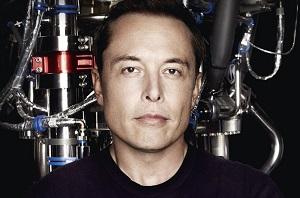
What was once considered a pipe dream for many scientists and engineers in the field is becoming a reality, thanks to the vision of South African-born CEO Elon Musk. His aerospace engineering company SpaceX, with the help of NASA, have a 2018 deadline. That deadline involves transporting the company's aerospace equipment to Mars. Upon the success of that mission, Musk plans to send humans to Mars in just under ten years.
An engineer in the aerospace field can look forward to a cool median salary of $107,830 per year. But it is not all sunshine and roses when working for this industry. It was revealed back in 2015 that working as an intern in SpaceX required a 60 to 80 hour work week. The compensation may be good, but the stress that comes with working in the aerospace industry - which sometimes depends on precise results - might not be entirely worth it. However, if you can handle those hours, you'd be part of one of the most celebrated engineering industries in the world.
But before you decide whether or not you belong in the aerospace industry, one question needs to be answered: As a child, did you play with Lego? The interns from SpaceX seem to have this in common - as well as being engineers of course.
Works Cited
Nordrum, Amy. "Popular Internet of Things Forecast of 50 Billion Devices by 2020 Is Outdated." IEEE Spectrum: Technology, Engineering, and Science News. 18 Aug. 2016. Web. 16 Jan. 2017.
"Plastic Injection Molding Prototyping Services." RevPart. Web. 16 Jan. 2017.
"PlasticsToday." PlasticsToday. Web. 16 Jan. 2017.
Research, Persistence Market. "Smart Factory Market Estimated to Grow Strongly by 2021." SAT Press Releases. Web. 16 Jan. 2017.
"SpaceX Will Launch Private Mars Missions as Soon as 2018." Space.com. Web. 16 Jan. 2017.
Should we be afraid of the oncoming deluge of automation technologies that are being engineered in the world? These technologies are certainly having a massive impact already; what do they augur for the future of employment?
The White House released a report in December 2016 entitled: Artificial Intelligence (AI), Automation, and the Economy. An excerpt of the report reads:
“Today, it may be challenging to predict exactly which jobs will be most immediately affected by AI-driven automation. Because AI is not a single technology, but rather a collection of technologies that are applied to specific tasks, the effects of AI will be felt unevenly through the economy.”
The report specifically highlights the implications of self-driving technologies. The report states that 3.1 million drivers of trucks and taxis could lose their jobs in the US thanks to autonomous vehicles.
Although engineers initially involved in helping Google, Tesla, and Apple create their self-driving car technology, they have begun plans to automate trucks as well.
And according to AllTrucking.com, there are 8.7 million truck drivers (also known as ‘truckers’) in the US alone.
<iframe width="560" height="315" src="https://www.youtube.com/embed/bK76W1kH4jA" frameborder="0" allowfullscreen></iframe>
With the recent advent of Uber, the number of working drivers has increased as well. The White House report states that 1.7 million drivers could be out of a job due to automation.
Interestingly, Uber has made efforts to keep up with developments in the car industry, although it won’t save their drivers. They have announced that they are preparing their very own fleet of self-driving cars. The company recently moved their operations from California to Arizona; a state with a more lenient approach to testing self-driving vehicles.
Conservative news anchor Tucker Carlson (Fox News) has underlined the problems he sees with the self-driving technology that Uber intends to implement. He stated figures about driving employment, saying, in 29 out of 50 states, the single most common job is driving for a living. He added that it is also the single most common job for men with a high school diploma. He is deeply concerned that without the need for drivers many will be out of work.
Does Automation really kill jobs?
It depends who you ask. The big question on everyone’s minds is whether or not automation will create more jobs than it replaces.
Regarding vehicle autonomy, Governor of Arizona, Doug Ducey alluded to the process taking a bit longer and that people should relax...for now:
“This technology isn’t going to be ready this year, next year, and likely the year after, there are many people that will never get into an autonomous vehicle. We think this is good technology…..it will help the disabled, the blind, the elderly; people that can’t drive. There are conveniences that are possible here, but they haven’t come to fruition yet.”
In the manufacturing industry, the National Association of Manufacturers stated last year, that in the United States the manufacturing industry employed 12 million Americans, representing 9% of the country’s workforce. The Guardian reports that these numbers are lower than they were in 1940.
However, the Association also found that in 2001, when industrial operations started seeing automated industrial robotics placed among human workers, employment in the country as a whole rose. Similarly, in the years 2010 to 2014, the number of industrial robotics the U.S. bought skyrocketed, and once again employment numbers went up.
Is this evidence that when automation predominates in one industry, other industries are created, thus raising general employment rates? Outgoing U.S. President Barack Obama believes this. In June of last year a representative of a steel workers’ union alluded to jobs being replaced by automation. Obama responded:
“The good news is that there are entire new industries that are starting to pop up. What we have to do is to make sure that folks are trained for the jobs that are coming in now, because some of those jobs of the past are just not going to come back.”
It would seem that constantly equipping yourself with current and relevant training and education would set you apart in a world that is threatened by automation technologies. Even engineers themselves are in real danger of automation rendering their expertise useless.
Are you ahead of the pack?

Works Cited
The Telegraph. Telegraph Media Group. Web. 17 Jan. 2017.
"Driverless Cars Are Coming, but Will They Kill Jobs?" Fox News. FOX News Network. Web. 17 Jan. 2017.
"Truck Drivers in the USA." Truck Drivers in the USA | AllTrucking.com. Web. 17 Jan. 2017.
Vardi, Moshe Y. "Are Robots Going to Steal Your Job? Probably | Moshe Y Vardi." Opinion. Guardian News and Media, 07 Apr. 2016. Web. 17 Jan. 2017.
Dear Colleagues
 I believe engineering professionals have a fundamental contradiction in their careers. They have to be obsessed with being absolutely meticulous, precise and have an enthusiasm for detail in their engineering work. However, in order to be successful – they have to communicate with absolute brilliance and passion summarising difficult concepts in often simple-to-understand ways.
I believe engineering professionals have a fundamental contradiction in their careers. They have to be obsessed with being absolutely meticulous, precise and have an enthusiasm for detail in their engineering work. However, in order to be successful – they have to communicate with absolute brilliance and passion summarising difficult concepts in often simple-to-understand ways.
How Many Times Have you Heard?
How many times have you heard someone highly technical droning on and focussing on some absolutely irrelevant detail when presenting to a non-technical audience? They lose the audience and quickly get a reputation for someone to avoid if you want to get a simple explanation.
Successful managers and engineers can communicate difficult concepts quickly and effectively. They can cut to the chase and explain highly complex ideas to their grandmother in terms she will happily understand and be able to converse about.
This skill enables them to win over their often non-technical comrades and to gain acceptance of their often arcane ideas. Being able to communicate well is probably your most important skill. Specific technical concepts and approaches (obviously not fundamental physics) in the engineering world date quickly – the ability to communicate well doesn’t date. It is an age-old skill.
How does one learn how to communicate well?
The quickest way is to listen to successful communicators and model yourself on them. After carefully practising a presentation thoroughly beforehand get everyone to give you a good critique on how you presented. Painful though it may be hearing from perhaps other novices – criticism is always be helpful.
And naturally, use Youtube and other video channels to peruse hugely positive examples of how to communicate well (e.g. the world famous TED talks).
At the end of the day – it is about practice and working hard at being better. Nothing particularly easy here. But eminently achievable. And ultimately – hugely beneficial in your career.
I do enjoy George Bernard Shaw’s comment about communication:
The single biggest problem in communication is the illusion that it has taken place.
Yours in engineering learning
Steve
Engineering careers have five flavours - how can we take advantage of them?
Since the early seventies, I have watched as engineering careers have morphed into five distinct types: ‘corporate’, ‘learning’, ‘contract’, ‘skilled global’ and ‘manager’. I would be most interested to know what your type is and naturally, make suggestions on what you think of my categorisation. I will conclude by making some suggestions on how you can take advantage of these trends.
Dear Colleagues
Engineering careers have five flavours - how can we take advantage of them?
Since the early seventies, I have watched as engineering careers have morphed into five distinct types: ‘corporate’, ‘learning’, ‘contract’, ‘skilled global’ and ‘manager’. I would be most interested to know what your type is and naturally, make suggestions on what you think of my categorisation. I will conclude by making some suggestions on how you can take advantage of these trends.
I believe each category still exists today, but the last two appear to be growing strongly.
The Corporate Engineer/Technician
During the sixties and early seventies, engineers set themselves up for life with one strong company with a solid career ladder. There were reasonably slow changes in technology so what know-how one gained at university or college was applicable for most of one’s career. Quality was a desirable (and required) attribute in all work and budgets weren’t fought over with such intensity. Competition was minimal. The company invested in the engineer’s career development and looked after him/her. Engineers were sought after and valued - even through the regular recessions. This type is still around, but has diminished over time.
Learning Engineer/Technician
In the seventies, new technologies started to move in, especially with developments such as; electronics, automation, computer technology and miniaturization of components, being typical examples. Competition started to increase and budgets were under some pressure. The engineer and technician had to learn these new technologies or face redundancy (or a dead end job sometimes in the guise of management). Engineering professionals started to move between companies with 4 to 8 employers being the norm before retirement.
Contract Engineer
Competition started to become more vigorous and, in the mid to late eighties, there were continual blasts of corporate downsizing. Management consultants were being called in to, “re-organise and re-engineer the already re-organised” - as one UK engineer expressed to me with some bitterness. Many engineers and technicians, who were dumped as a result of these restructurings, started working on hourly rates as contractors or consultants. Loyalty to the company was lost and instead remuneration levels became the focus. Temporary and often lucrative contracts were given by companies who only wanted to offer temporary jobs for the life of a single project. ‘Bodyshops’ began to emerge. Engineers and technicians began to be hired out - where they were often short-changed by the sweatshop owners. Guaranteed career ladders became more uncommon and continuing education for engineers and technicians more limited. Large companies were able to avoid negative publicity when contract engineers were sacked - they were not “true employees” – merely temporary guests of the company! As a result many were deterred from becoming engineers and technicians as they perceived it to be an unstable career. And many left the profession and moved into other areas, such as commerce.
The Skilled or Global Engineer
A severe shortage of engineering professionals started developing in the late nineties as a result of the downsizing in the eighties. Many with expertise had been sacked (and then retrained in other areas) and others were simply not interested in the profession due to the tough education process, limited income and a sense that there remained some instability. This shortage was exacerbated by a big jump in infrastructure, mining, oil and gas and manufacturing projects and an economic boom – currently the boom has changed to a bust for many of these resource areas. Salaries started jumping in certain engineering professions and engineers and technicians were back in demand. Paradoxically, however, there appeared to be considerably more demand for specialists. Employers made (temporary) employment conditional on engineers and technicians having the precise skill set they were after, for a specific project (and often fired the engineers and technicians whose skills weren’t considered relevant any longer). Furthermore, engineering professionals in companies found that, due to the severe shortage of expertise, they were expected to multi-task, work longer hours and have a wide range of know-how. Technology change continued to accelerate and engineers /technicians began taking on work on a global basis - including work with virtual teams spread around the world. Due to the shortage of engineering expertise and downward pressure on costs, outsourcing of engineering work accelerated. Companies, however, found that the old adage; ‘Pay peanuts and you get monkeys’ remained true - under paying engineers and technicians, doing sophisticated design work in certain third world countries, just didn’t work (and actually cost more).
The Manager
Becoming a manager became a popular career choice. This was due in part to the uncertainties in engineering, but was also as a result of the perception that a career in management was the path to a quick buck and a relaxing career. University business schools perpetrated this myth through their misleading marketing. Many engineering students came to believe that they could be transformed in a mere 10 to 12 months. They thought they could break out of their technical shackles and join their more laid back and easy going peers in human resources, finance and administration by following this path. However, the salaries of the ‘Global Engineer’ often surpassed that of ‘The Manager’ - leading many ‘Managers’ to question what they were doing in the corporate environment. However, it must be said that the successful engineers with management ability (and perhaps an MBA), who set up their own businesses, were often extraordinarily successful - creating everything from industrial software to precision manufacturing and employing thousands of people.
So where do we go from here?
You need to become a professional career planner and take ownership of your career on a day-by-day basis. Watch the career trends and avoid being stuck in a dead end job. It sounds like a very lonely world, but no one – not your husband/wife/partner or business associate - is going to do this for you. Sixty years ago, as a corporate engineer, perhaps you were cared for. This is unlikely these days. If you fail to map your career out you may pay an enormous price in the years to come; with loss of earnings and even worse – loss of job satisfaction. Once you have identified who you are and where you are going, keep firmly to your course using a good compass.
You have to become an avid learner. Not only by absorbing information from your peers, on-the-job or from courses, but also by becoming adept at working with ‘meta-knowledge’ - managing information and knowledge. Know where to find it and have the ability to identify it when it is found. It is not always necessary to absorb and become skilled in the actual know-how, but it is important to ‘know where it is and what it consists of’.
And dare I say, plan for a time when you may be unable to work any longer, due to health reasons or a bad economy. Unpleasant scenarios, but realistic - I hope instead that you work happily at something which is fulfilling and financially satisfactory until you depart this ‘mortal coil’.
Thanks to Vern Johnson of the IEEE for inspiration for this article.
Jeff Foxworthy had an interesting take on his career, but this is not my advice to you: “My whole career can be summed up with 'Ignorance is bliss.' When you do not know better, you do not really worry about failing”.
Yours in engineering learning
Steve
Mackay’s Musings – 17th May’16 #600
780, 293 readers – www.eit.edu.au/cms/news/blog-steve-mackay
Cybersecurity has become one of the most important topics of conversation for business, governments and the general population, all those striving for the security and privacy of their data, some of which is stored in the cloud.
There are measures that can be taken to protect data, but the situation is worsening. Entire industries are being threatened with ransomware - one of the most malignant hacking enterprises - as criminal ‘businesses’ pop up around the world.
Experts warn that even connecting to a government-funded free Wi-Fi hotspot puts people at risk of being hacked. The danger for the individual, of course, is that personal data can result in the theft of identity which is potentially very costly and tricky to retrieve.
Warnings and cautions abound. One of these asserts, for example, that without a two-factor authentication on a Gmail email, incidents of account hacking are the fault of the owner.
However, for large-scale operations, that require interconnected servers like government and industry, securing data from prying hackers is not as simple.

Image: The National Cyber Security Center in Gloucestershire. Credit: www.gchq.gov.uk
In the United Kingdom, seven start-up cybersecurity engineering firms have been handpicked by the national intelligence agency to assist in the operation of a countrywide firewall named the GCHQ Cyber Accelerator. It will be housed in the new National Cyber Security Centre (NCSC) in Cheltenham in Gloucestershire, England.
The firewall is supposed to stop hackers from accessing government servers and those of key industries, including power generation, some engineering and education operations, charities and will also be used by small business.
At the Billington Summit in Washington D.C. on the 4th of October, 2016, the National Cyber Security Centre Chief Executive, Ciaran Martin, delivered a speech on cyber security. An excerpt from the transcript of his speech reads:
“Our critical systems are going increasingly digital. Systems like the power grid have long had significant computer networks and we’ve worked with those providers on security issues for a very long time. Manual systems, like the meters used for measuring gas and electric usage, are going digital too. This Smart Meter technology will keep costs down and improve the environment, but it will also mean a box connected to the Internet in every home and business in our country.”
The incoming 45th President of the United States, Donald Trump’s team took to his official Facebook page to announce that former New York City Mayor, Rudy Giuliani, will head up the department that deals with cyber security in the country:
“As the use of modern communications and technology has moved forward at unparalleled speed the necessary defences have lagged behind. The President-elect recognizes that this needs immediate attention and input from private sector leaders to help the government plan to make us more secure.”
Eugene Kaspersky, the CEO of Russian-based Kaspersky Lab, the specialists in computer firewall protection, dreams of a future where it would be too cumbersome a task to hack into any infrastructure worldwide. In 2016, Malwarebytes quoted him, saying:
“Securing infrastructure against hackers is a massive challenge, but I believe that one day we will achieve the state when you can have a wind turbine connected to the Internet, but still be absolutely secure.”
The Dean of Engineering at the Engineering Institute of Technology, Steve Mackay, maintains that the introduction of ethernet and TCP/IP unfortunately raised the likelihood that engineering industries would be hacked.
“We need to design - into everything we do, both individually and holistically - some sort of cyber security. Furthermore, security must be multi-layered to foil hackers getting through initial firewalls. ” Mackay said.
The Engineering Institute of Technology offers a 6-week live, online course that covers the basics of cybersecurity for automation, control and SCADA systems, focussing on the current trends occurring in the industry today.
Increasingly the world will need engineering professionals able to implement security measures for industrial control systems in the cyber world.

Works Cited
"Donald J. Trump." Facebook - Log In or Sign Up. Web. 16 Jan. 2017.
EngInstTech. "ENN36 Industrial Internet Security." YouTube. YouTube, 17 June 2016. Web. 16 Jan. 2017.
"GCHQ Backs Cybersecurity Start-ups in New Cheltenham Hub." BBC News. BBC, 11 Jan. 2017. Web. 16 Jan. 2017.
Tsing, William. "Threat Modeling: What Are You so Afraid Of?" Malwarebytes Labs. Malwarebytes, 17 Oct. 2016. Web. 16 Jan. 2017.
Blog - Steve Mackay
EIT's Technical Director, Steve Mackay, enjoys keeping his blog up-to-date with useful tips and current industry matters for his fellow colleagues. He has a loyal and expanding following base reaching over 300,000 people around the world.
Student Stories
In this section you have the opportunity to read and listen to EIT students talking about the reality of the programs. Discussions are wide-ranging and include information about the study commitment required, the value of the qualification in their careers, the relevance of the subject matter, future pathways, and more. They provide valuable feedback for you to take into account before you decide to join one of our programs.
Career Information
Latest career information including industry research, podcasts, blogs, life hacks and general information about how you can make the most out of your career.
Education
Here you will find out more about the latest trends and developments within education worldwide, along with some helpful articles regarding study tips and keeping on track with your studies.
Developments
The latest innovation and inventions from the world of engineering can be found here. Learn about advances in technology and how they can make a real difference within your industry.
Announcements
Keep up to date with the latest announcements from the Engineering Institute of Technology. In this section you can read more about new courses, new recognition from professional bodies, our Excellence in Teaching Award, upcoming free webinars and much more.
Monthly Update
We understand that you may not have time to read all the articles that we post, so our monthly update gives you access to some fascinating articles which cover the best of the months news in a compact format.
